Abstract
In view of the multiplicity of methods used at present for the preparation and assay of antivenins and as a first step towards the international standardization of antivenins, it seemed advisable to make a comparative study of the methods used in the institutes specializing in the production of these sera. With this end in view, the author circulated to the serologists of institutes concerned a detailed questionnaire on the assay methods used for the determination of the neutralization potency of the various types of antivenins prepared under their direction. The information supplied by these institutes is reproduced, in condensed form, in this report and is analysed by the author.
The author emphasizes that the great variety in the constitution of venoms necessitates: (1) the use of monovalent standard sera against homologous “test” venoms of high activity and stability; and (2) the establishment, on a regional basis, of standard antivenins corresponding to groups of snakes characterized by venoms of common or closely related antigenic constitution.
Full text
PDF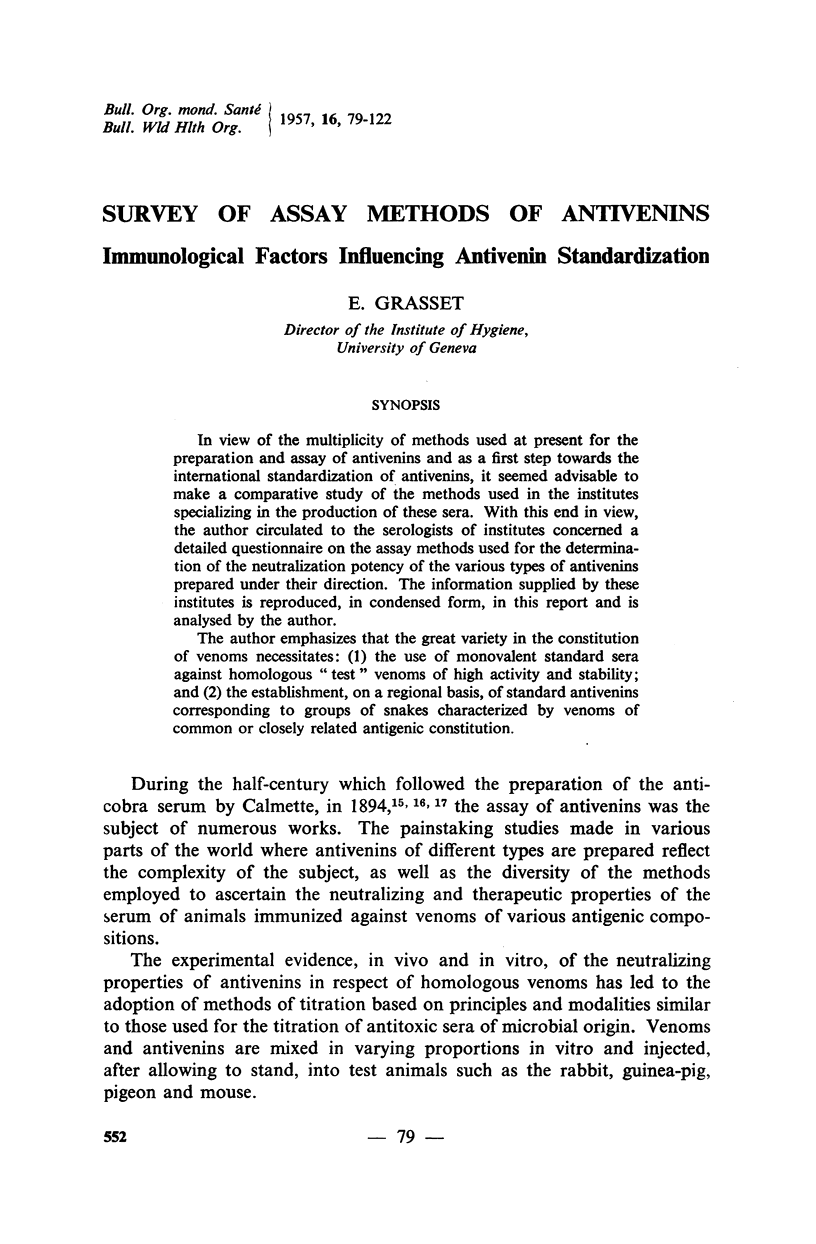
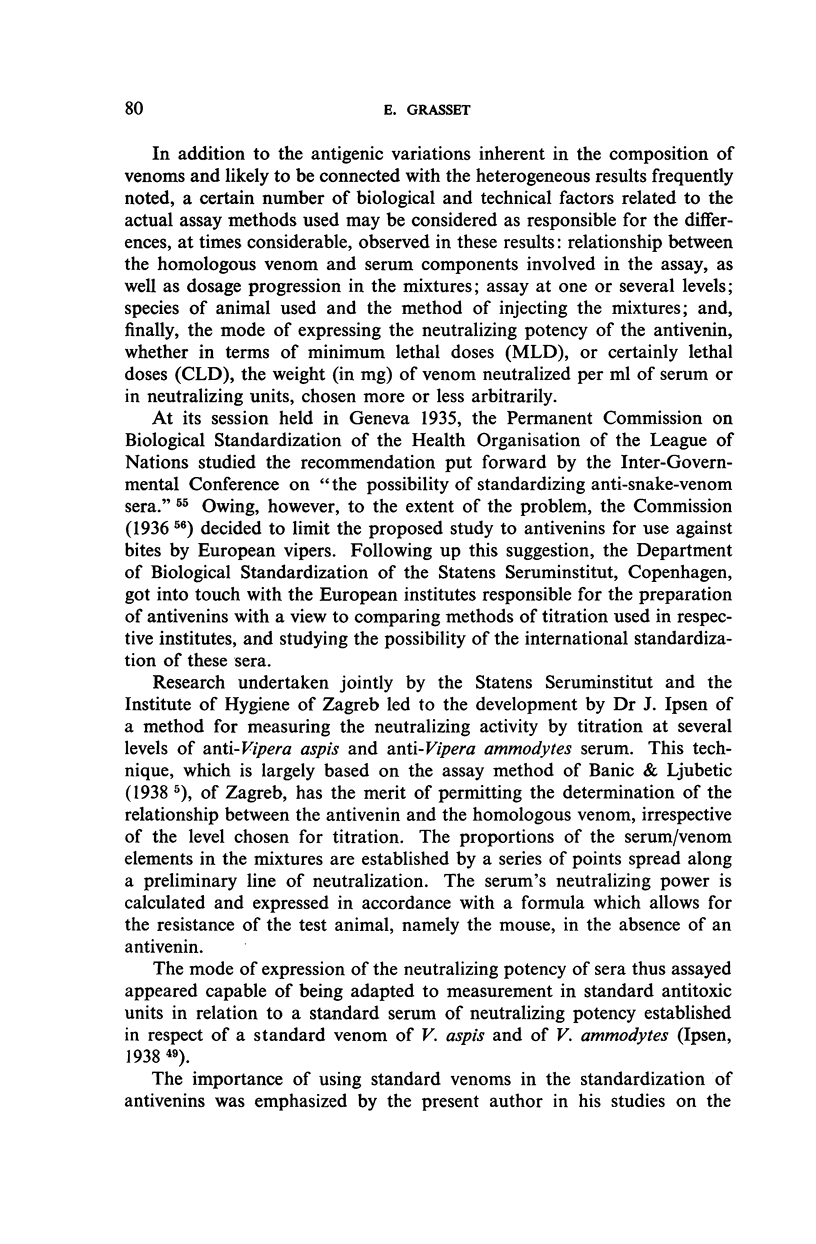
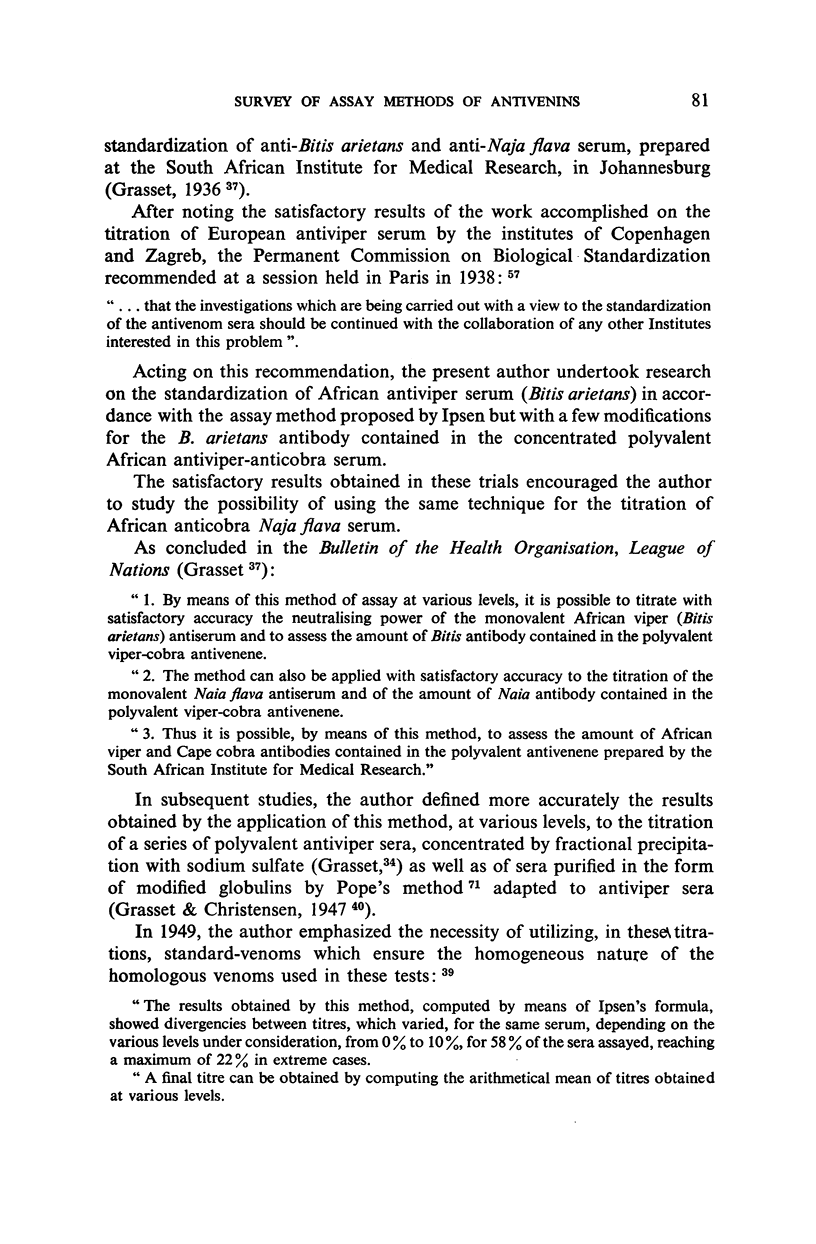
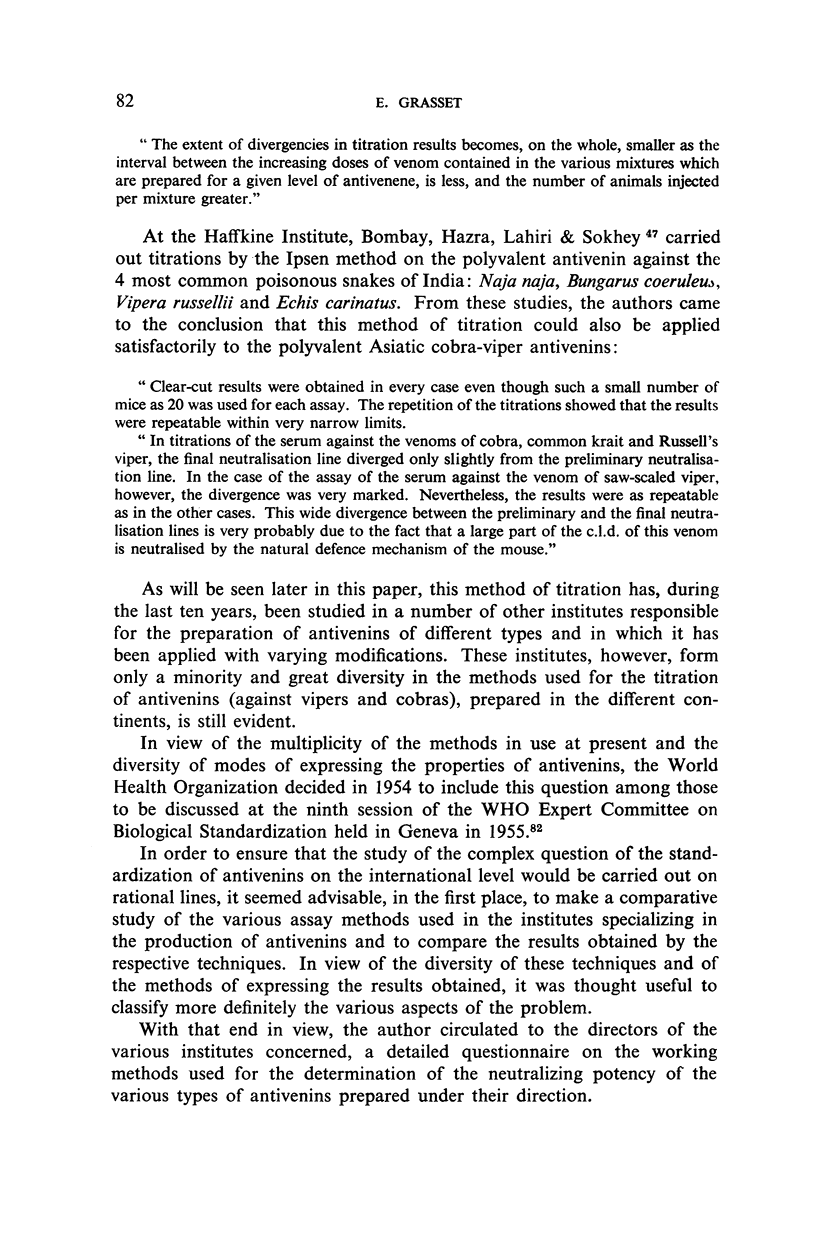
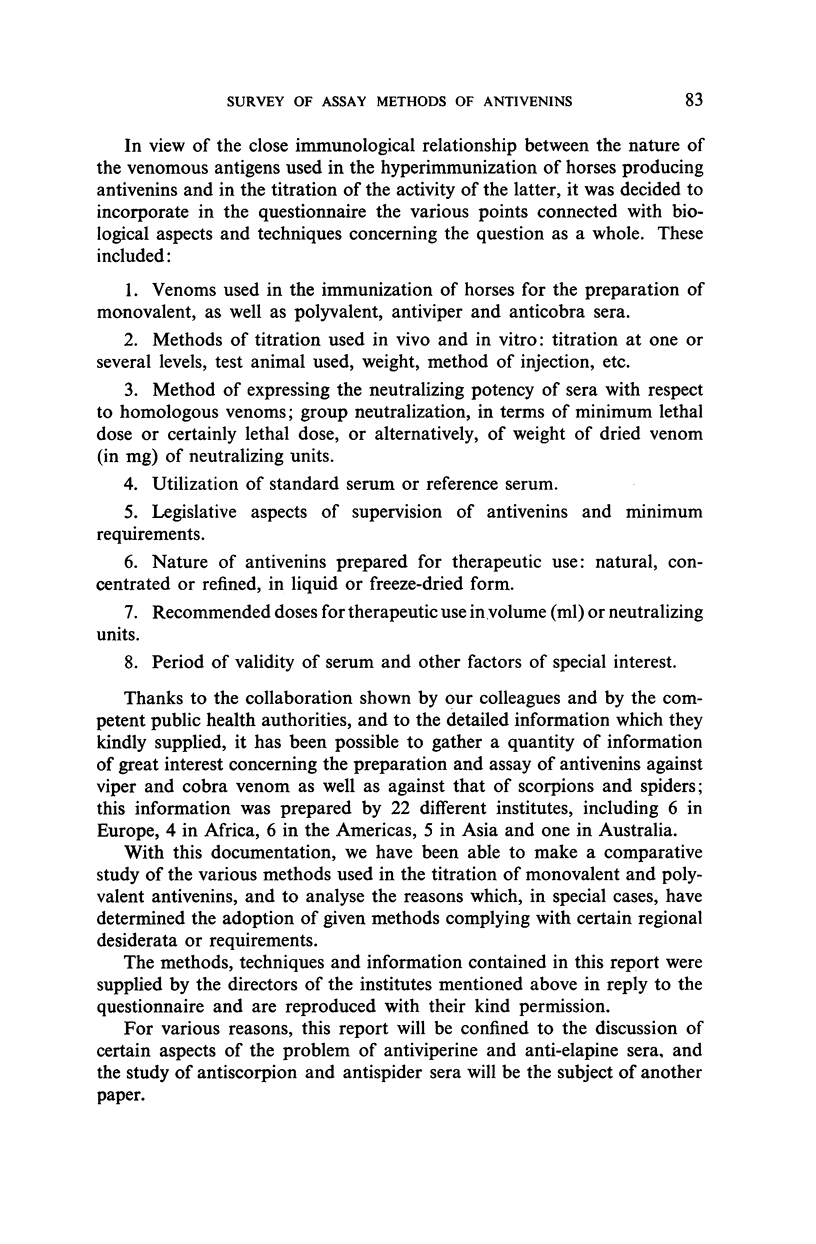
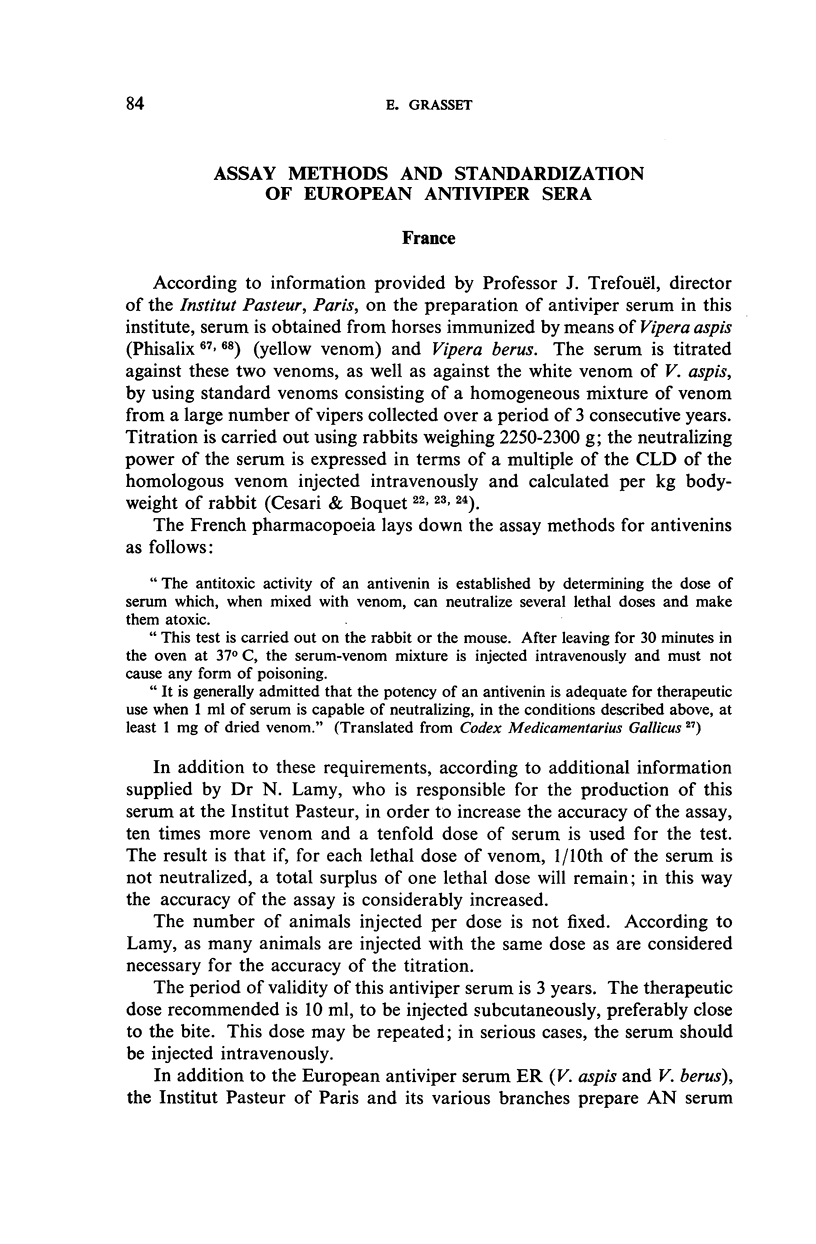
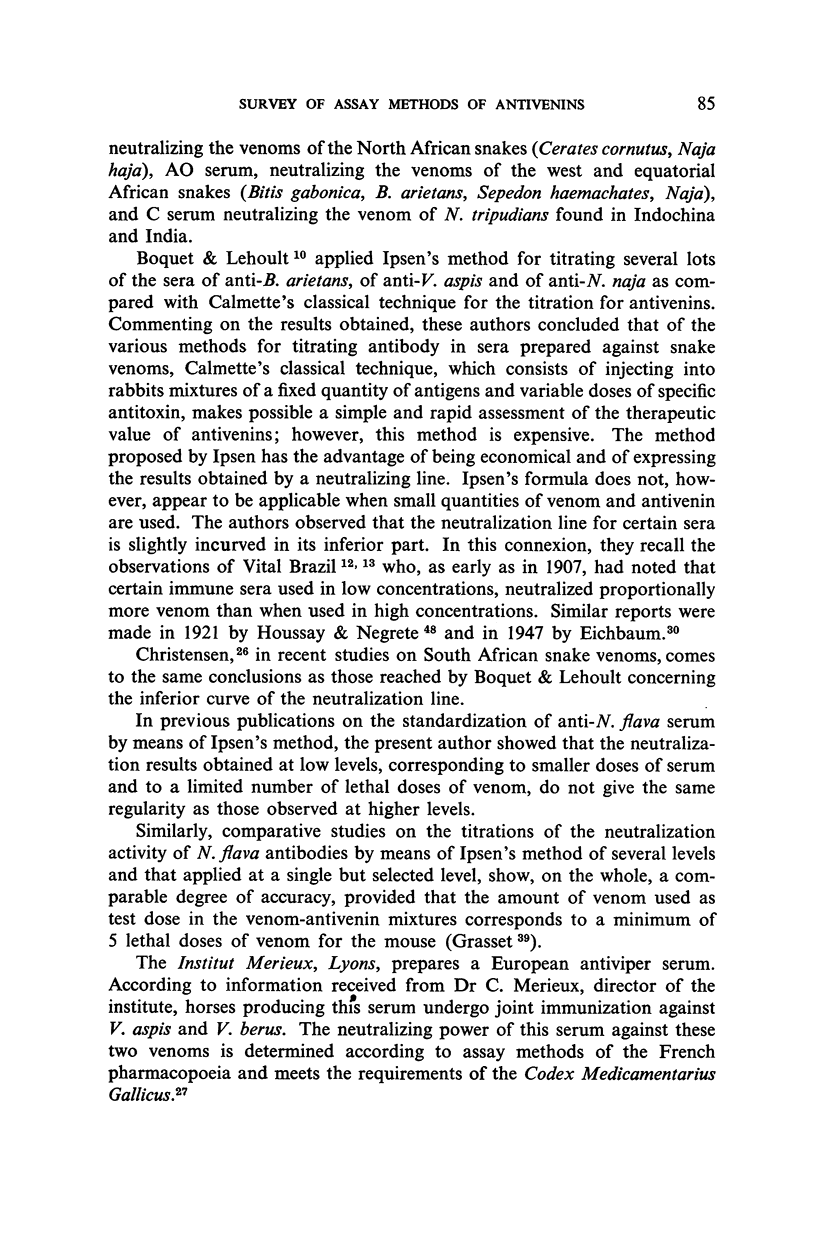
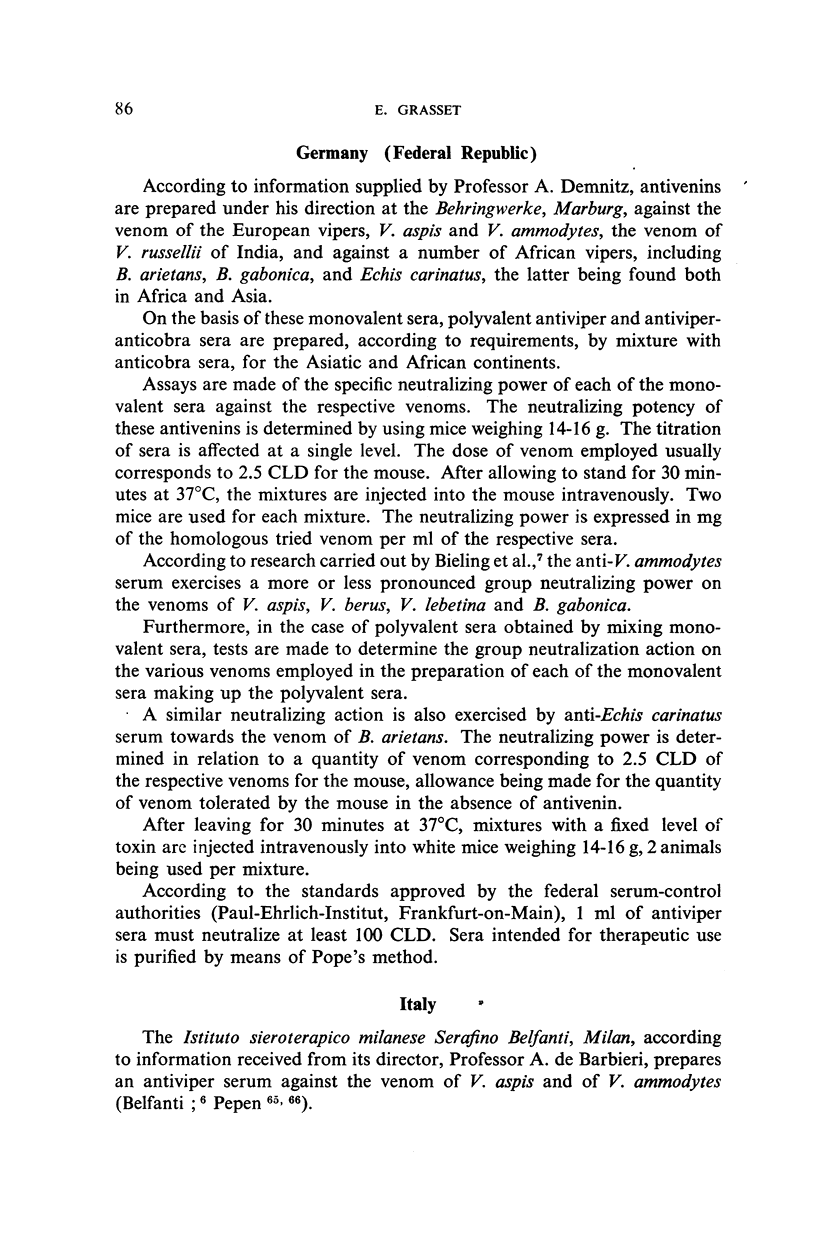
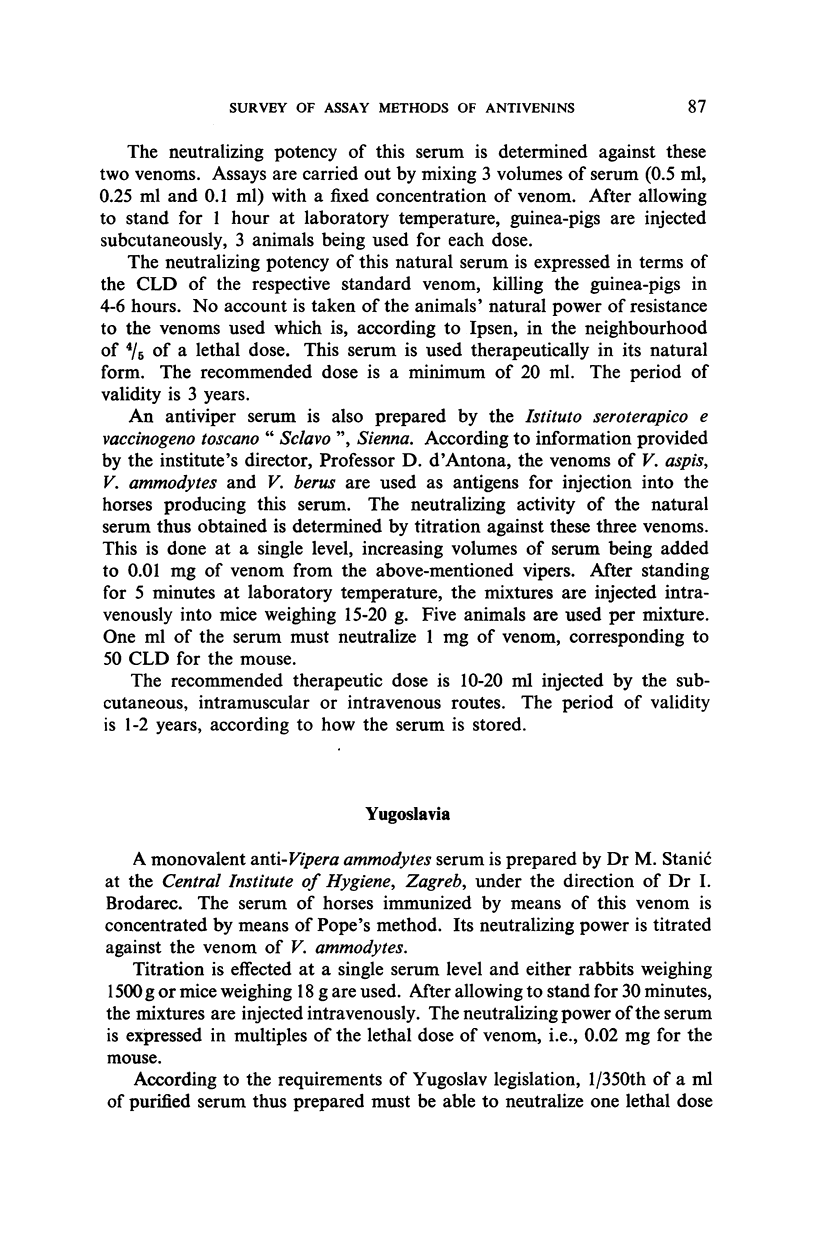
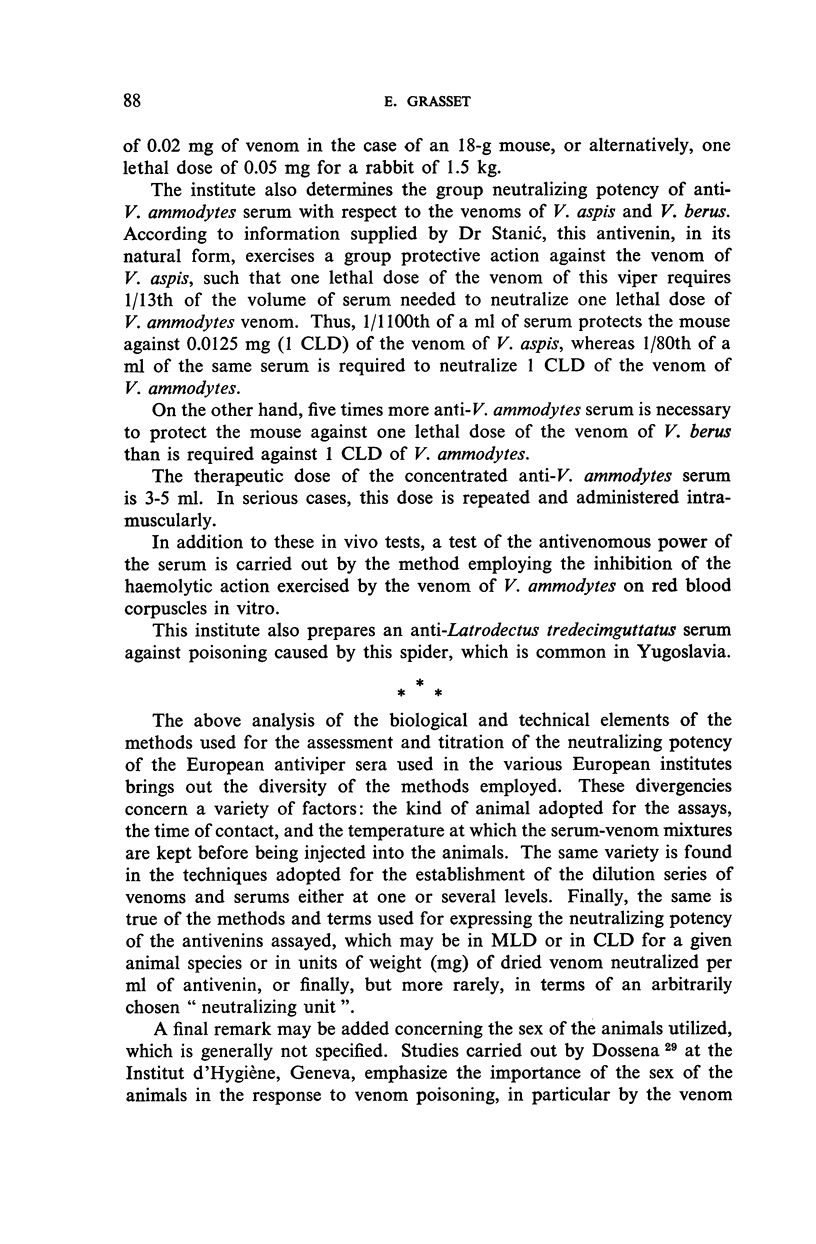
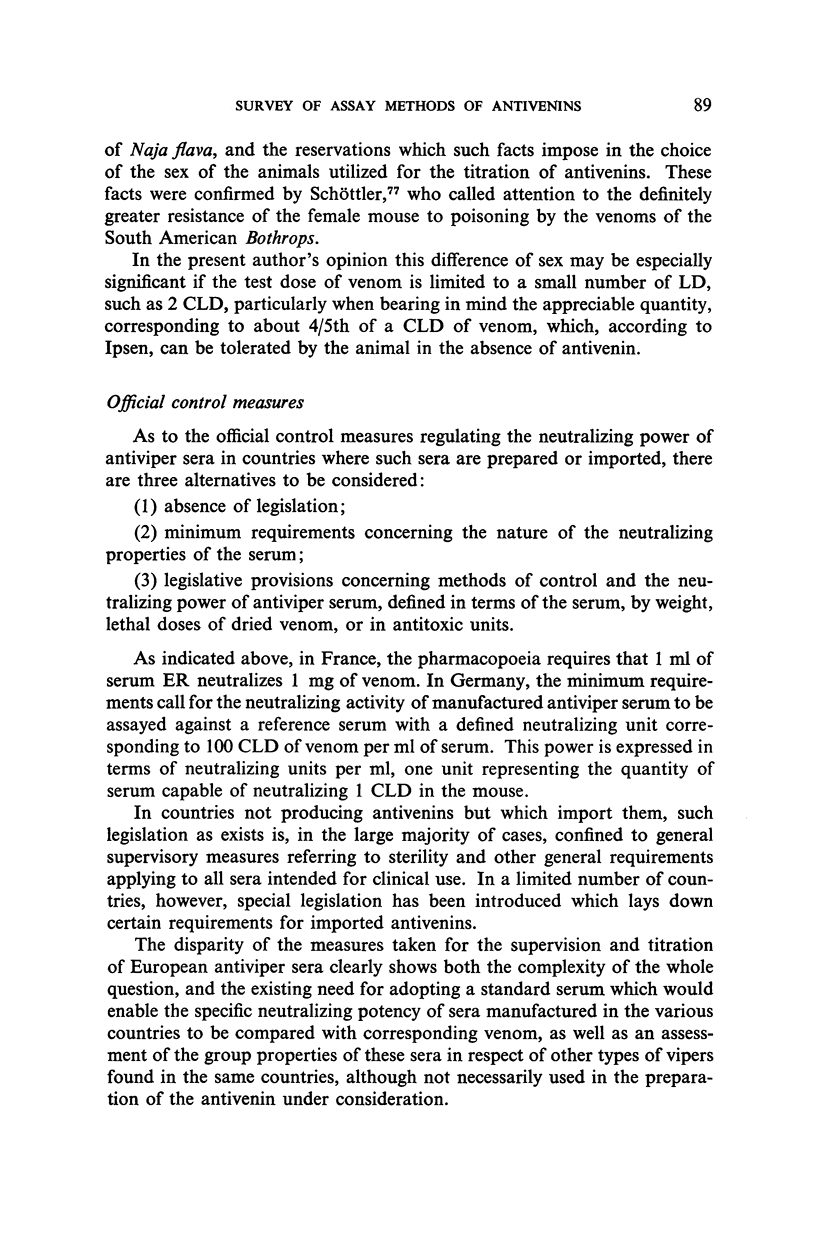
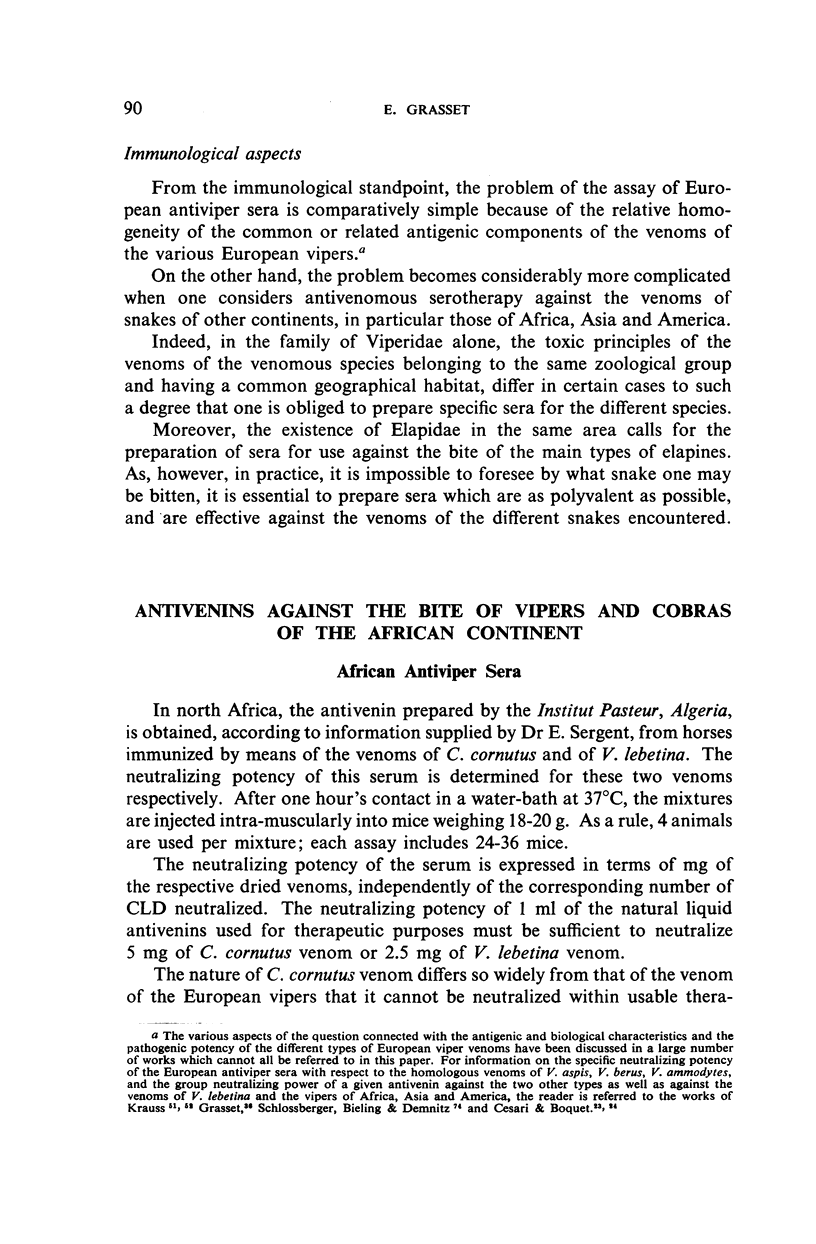
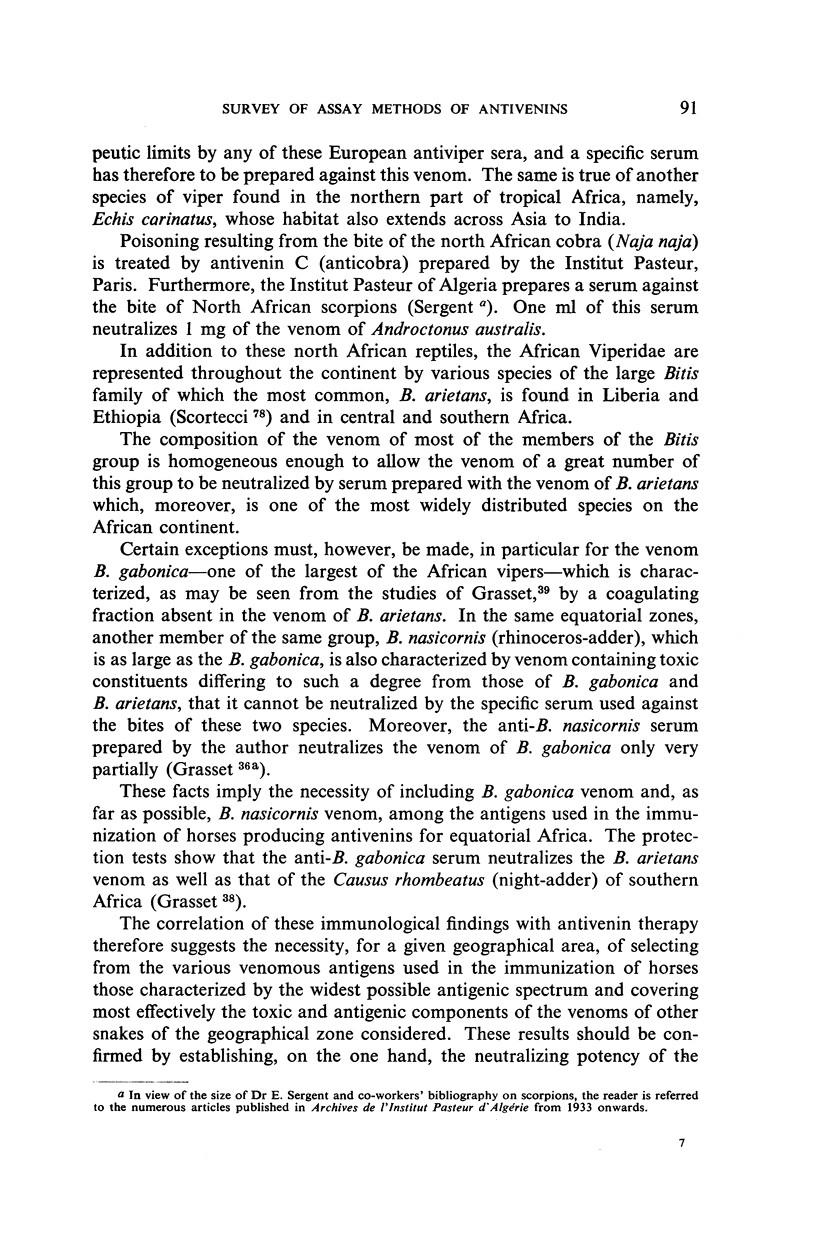
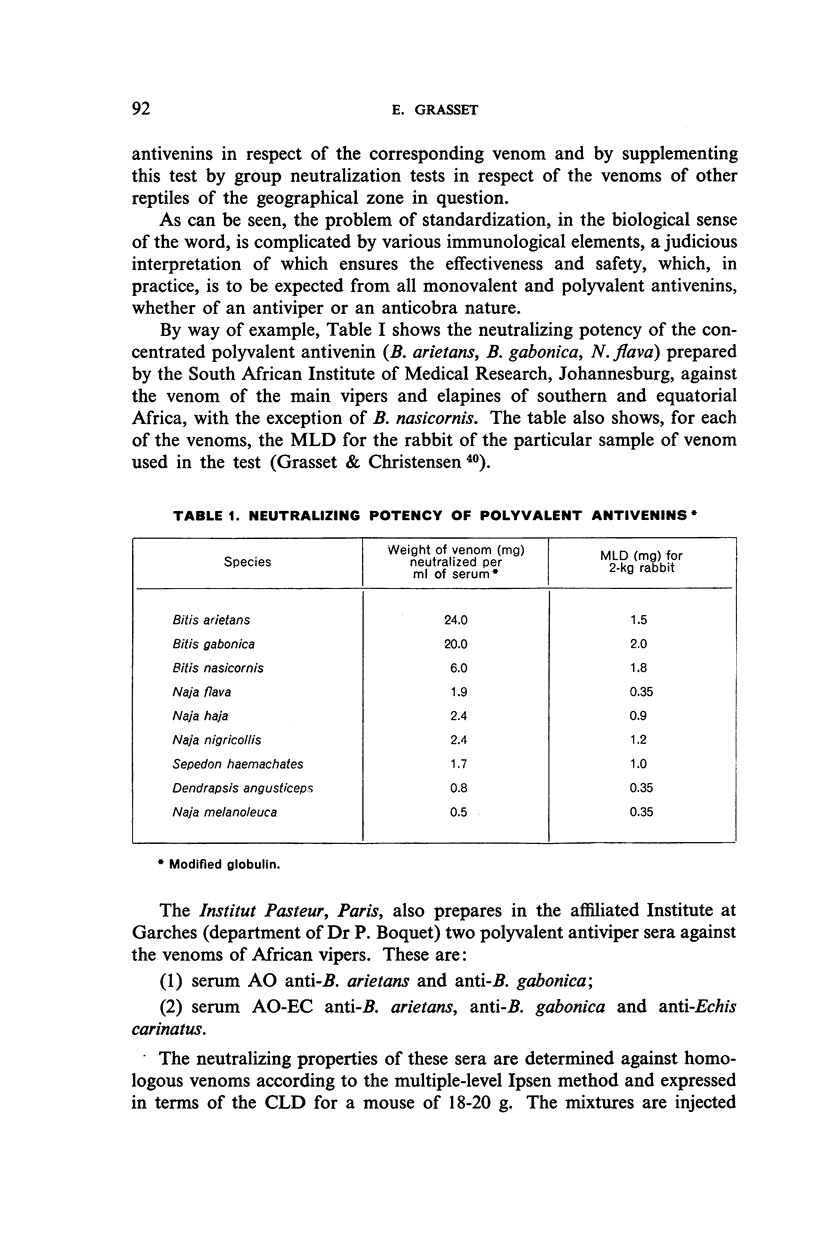
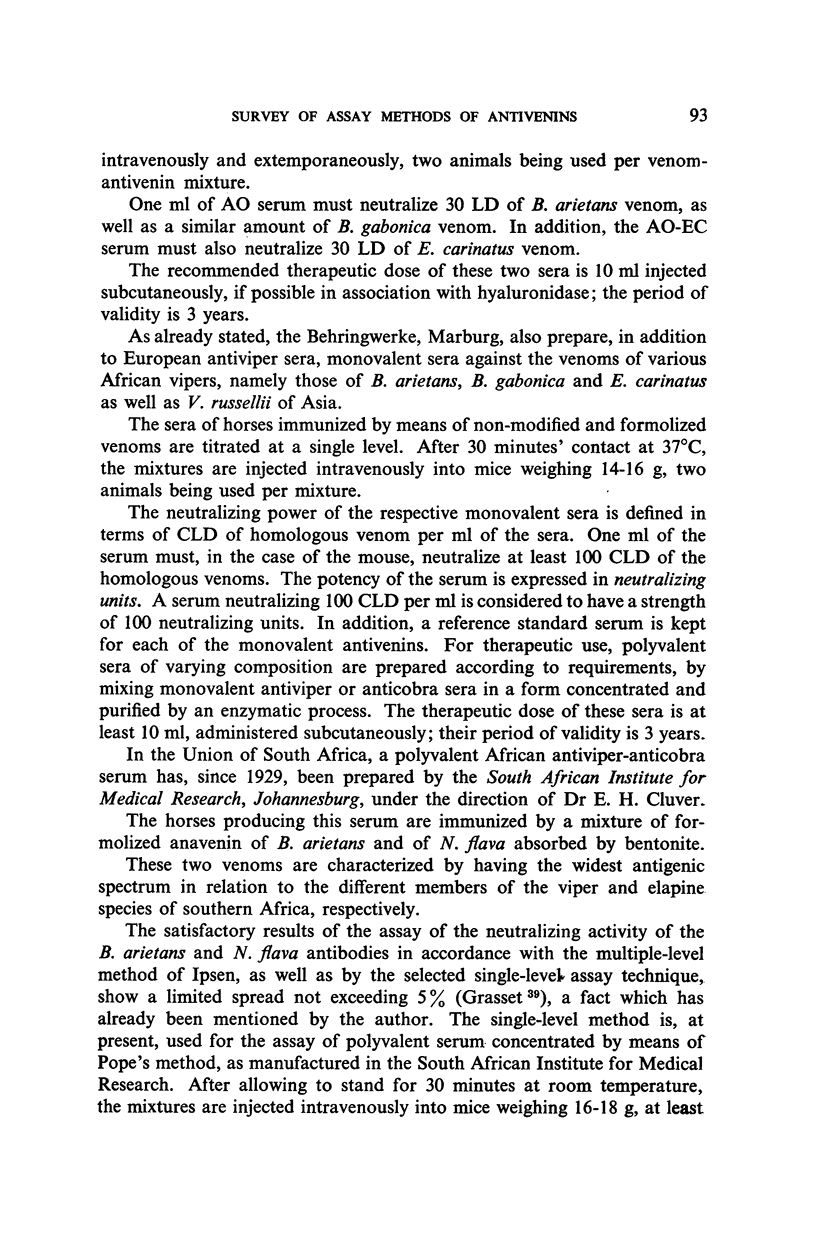
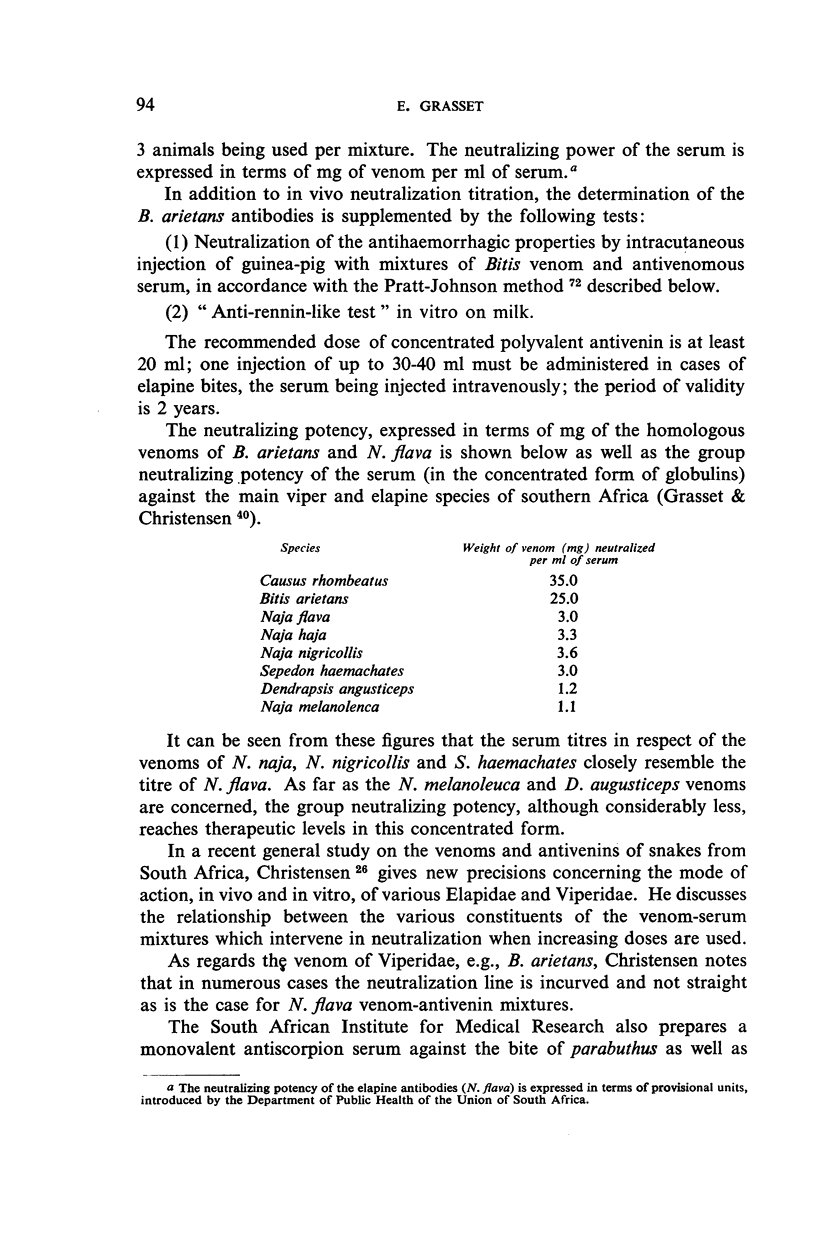
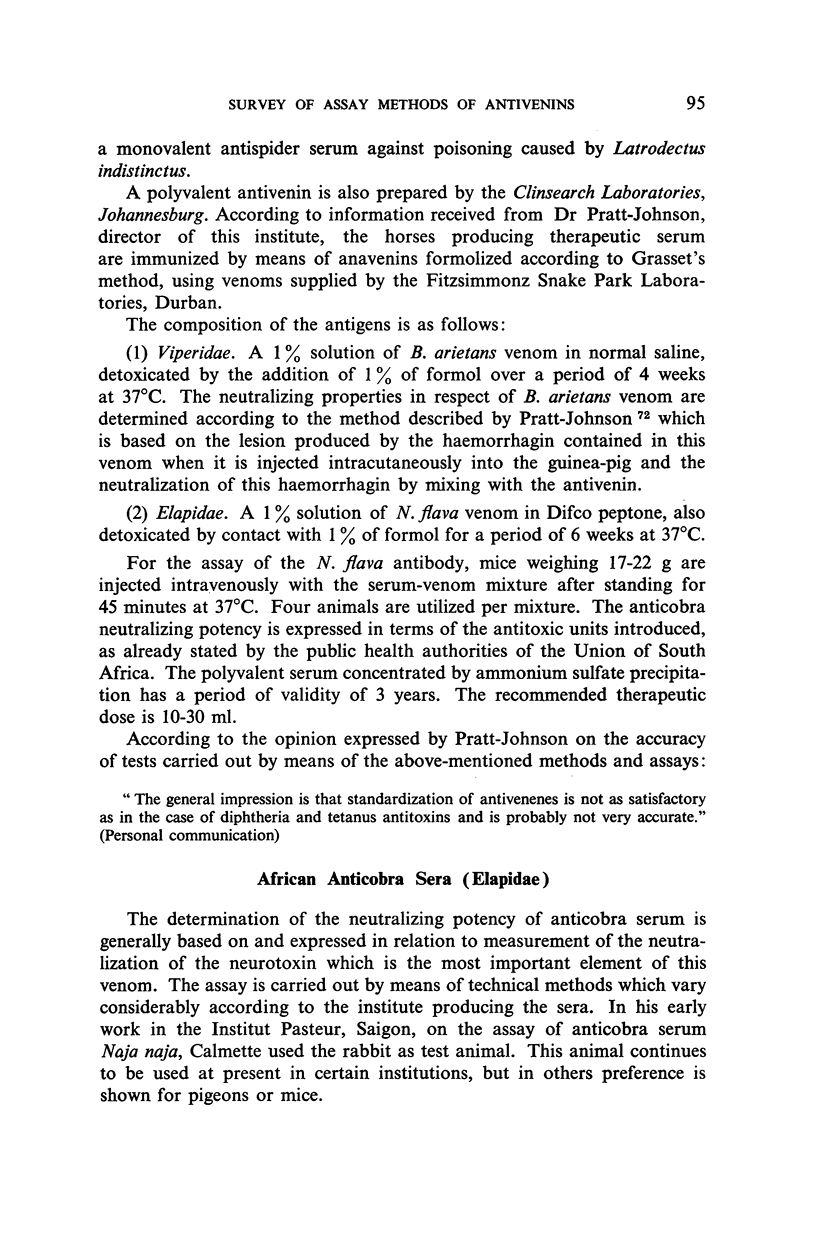
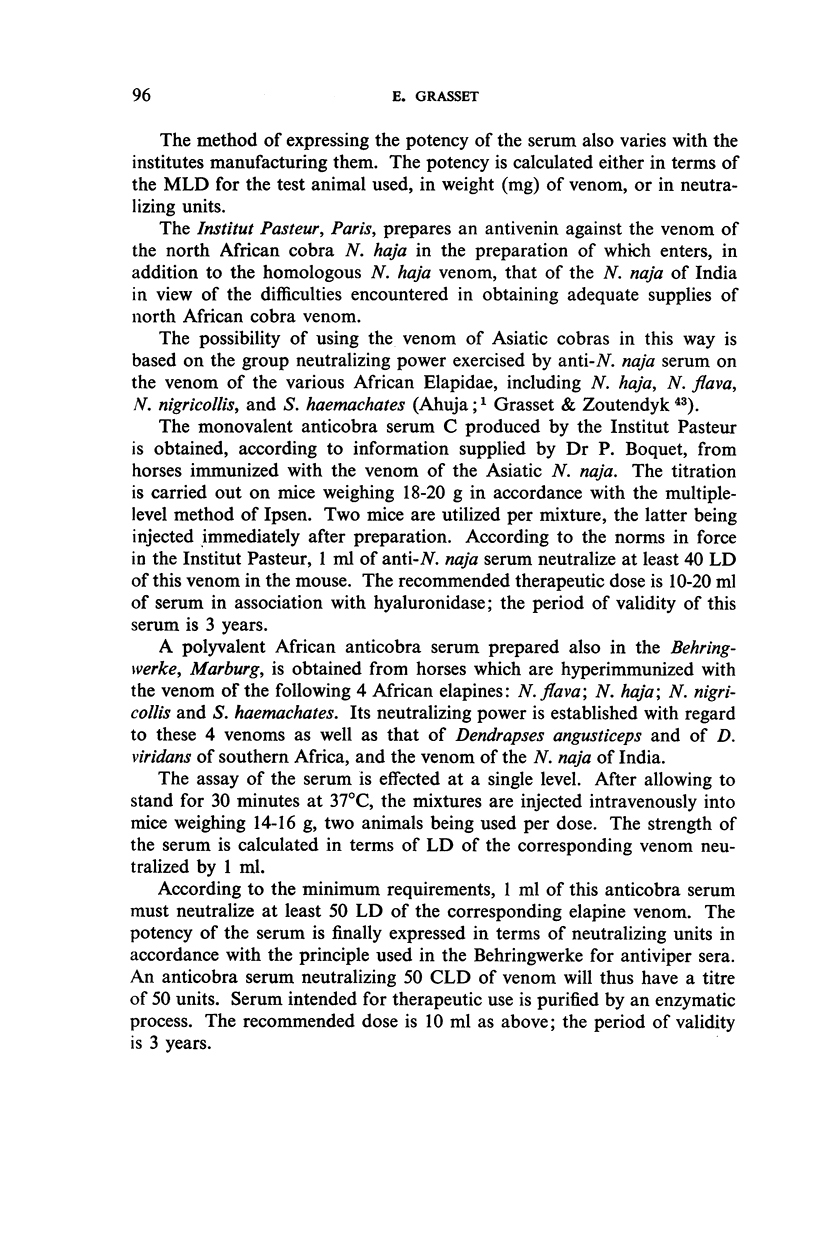
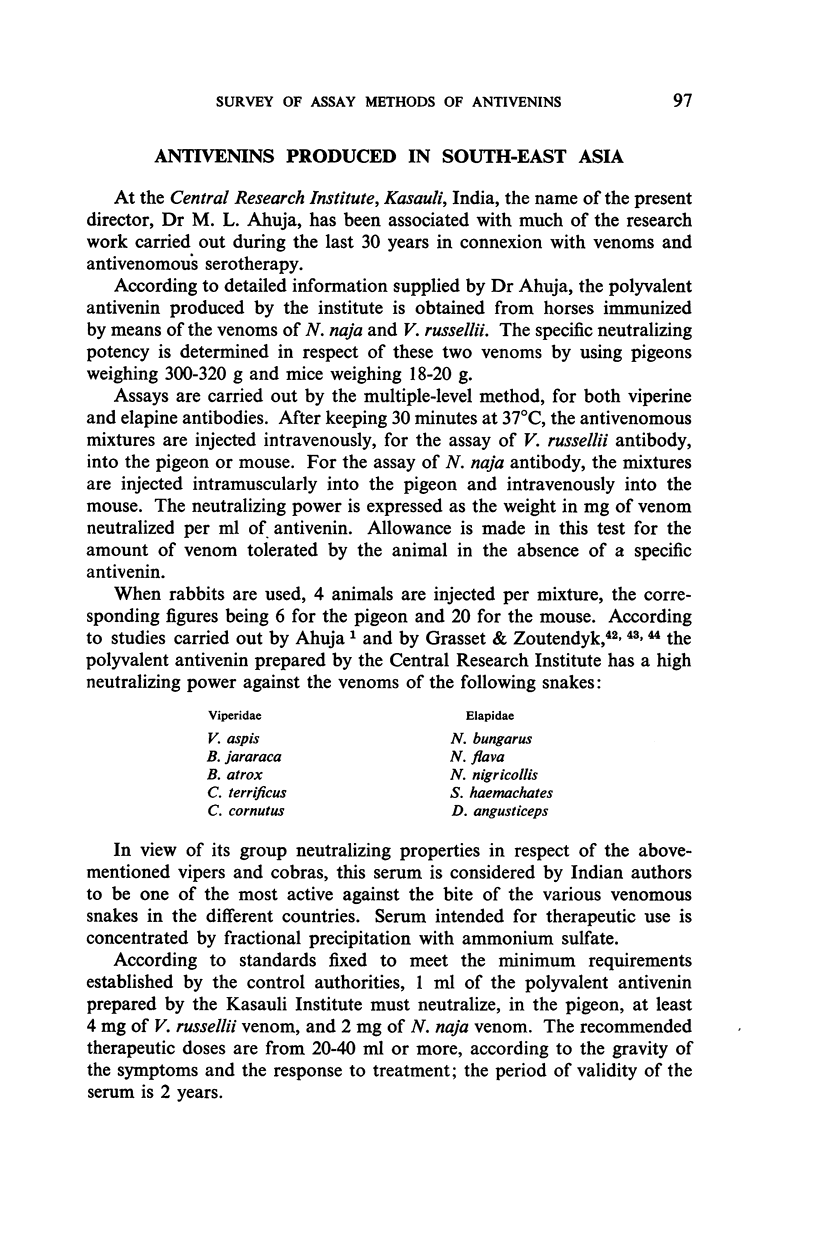
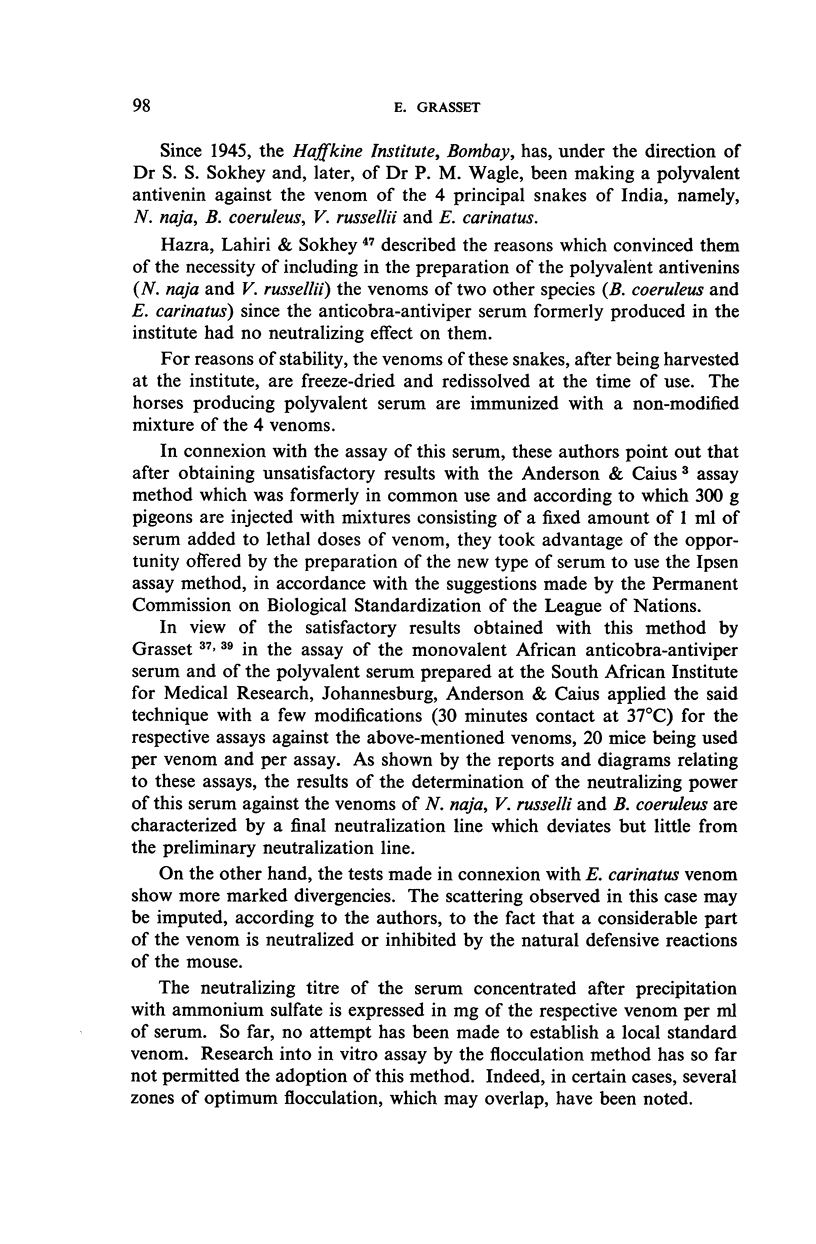
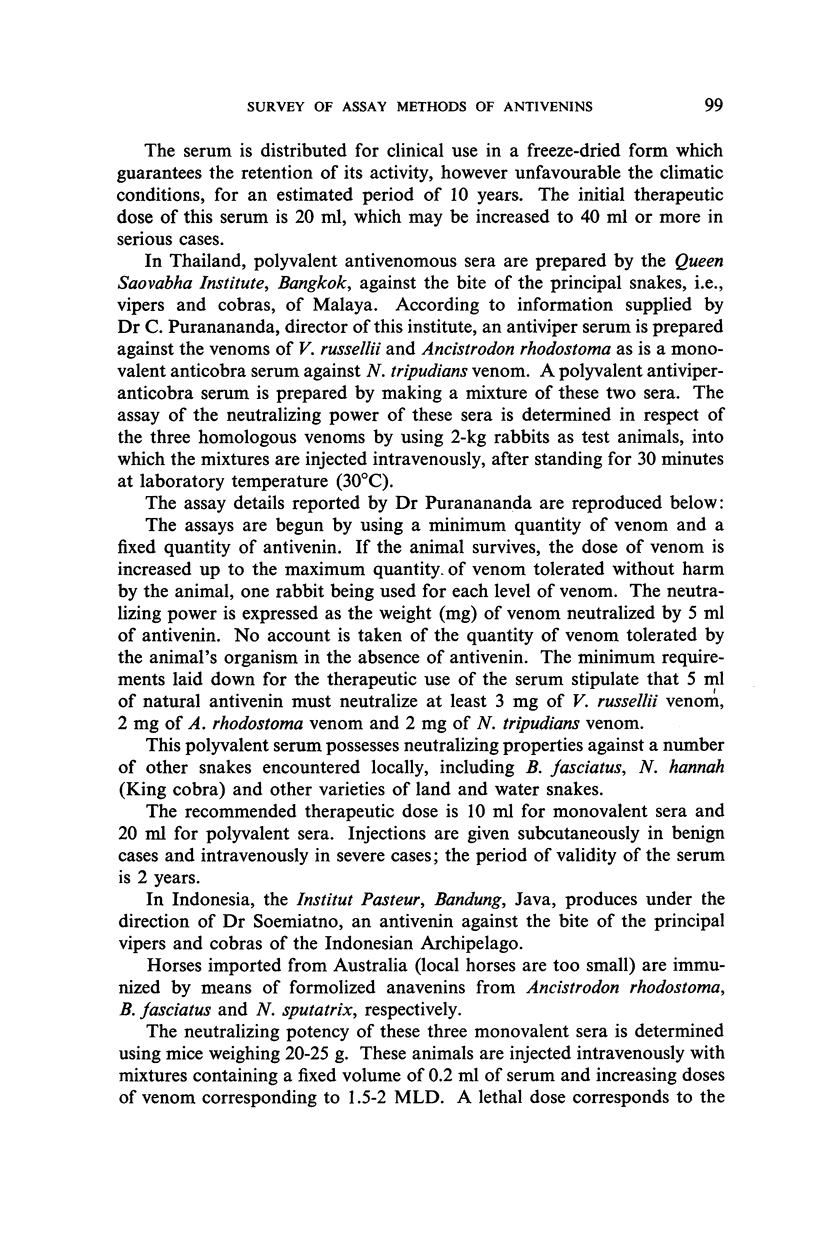
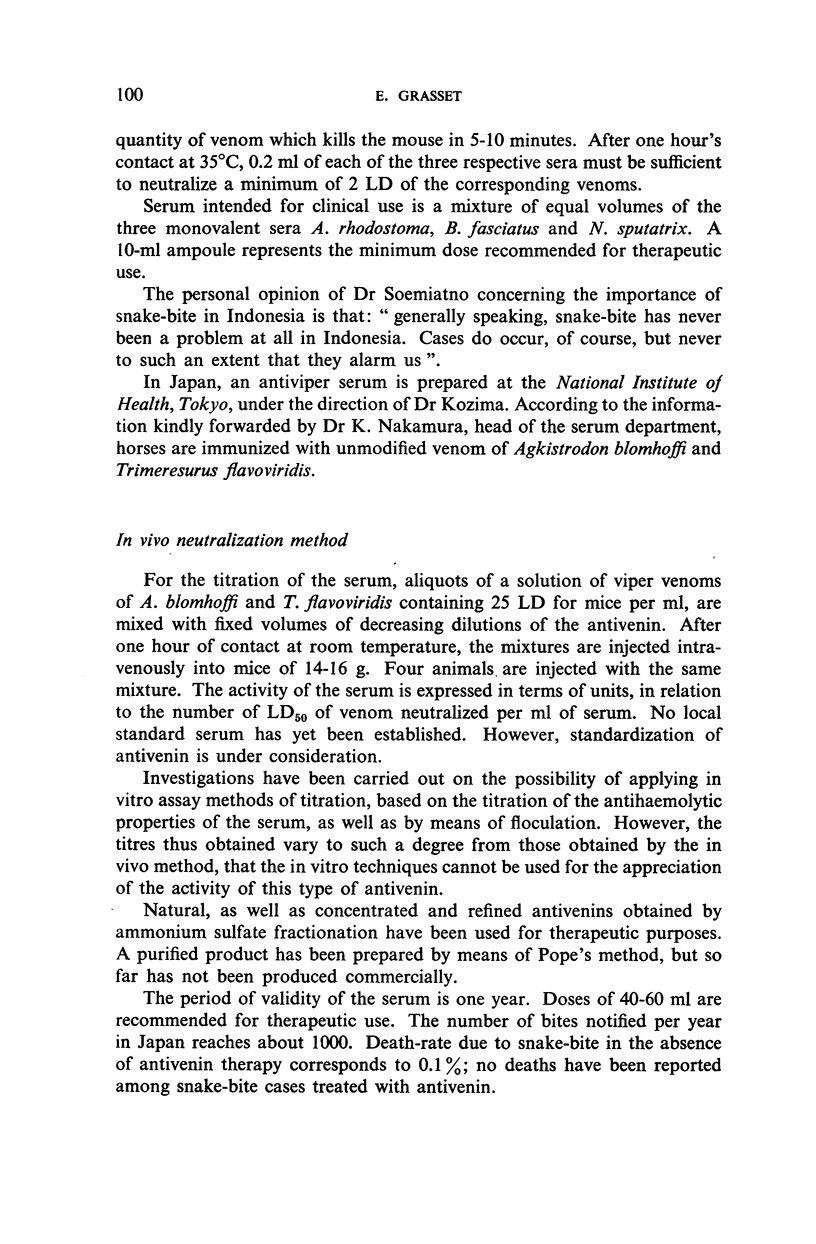
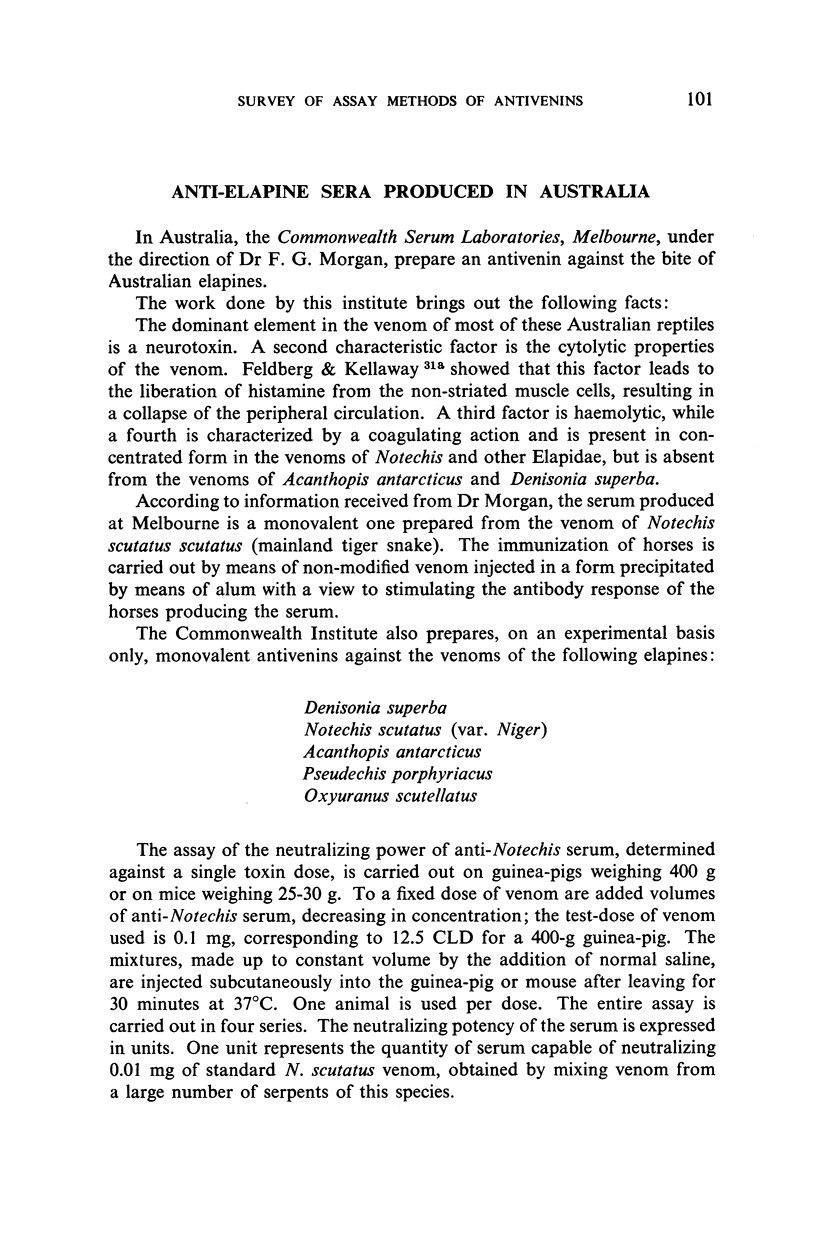
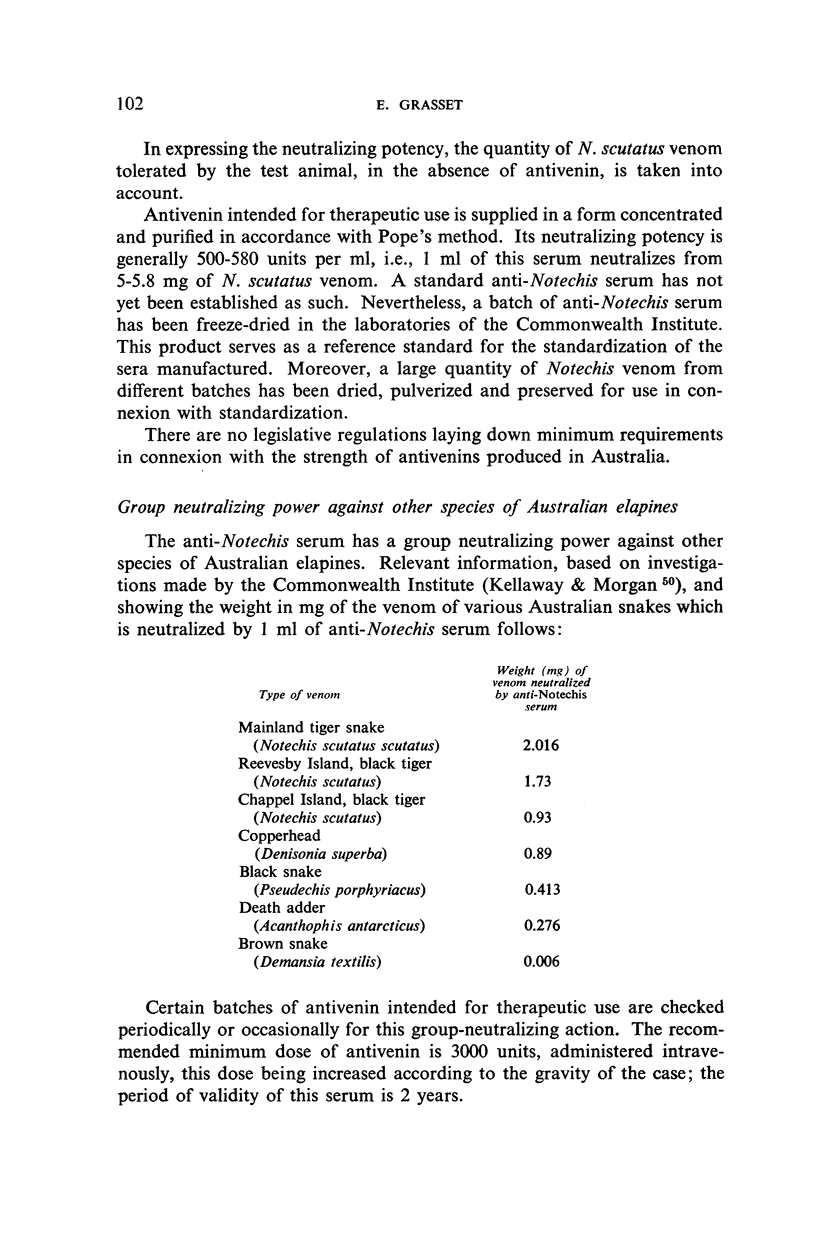
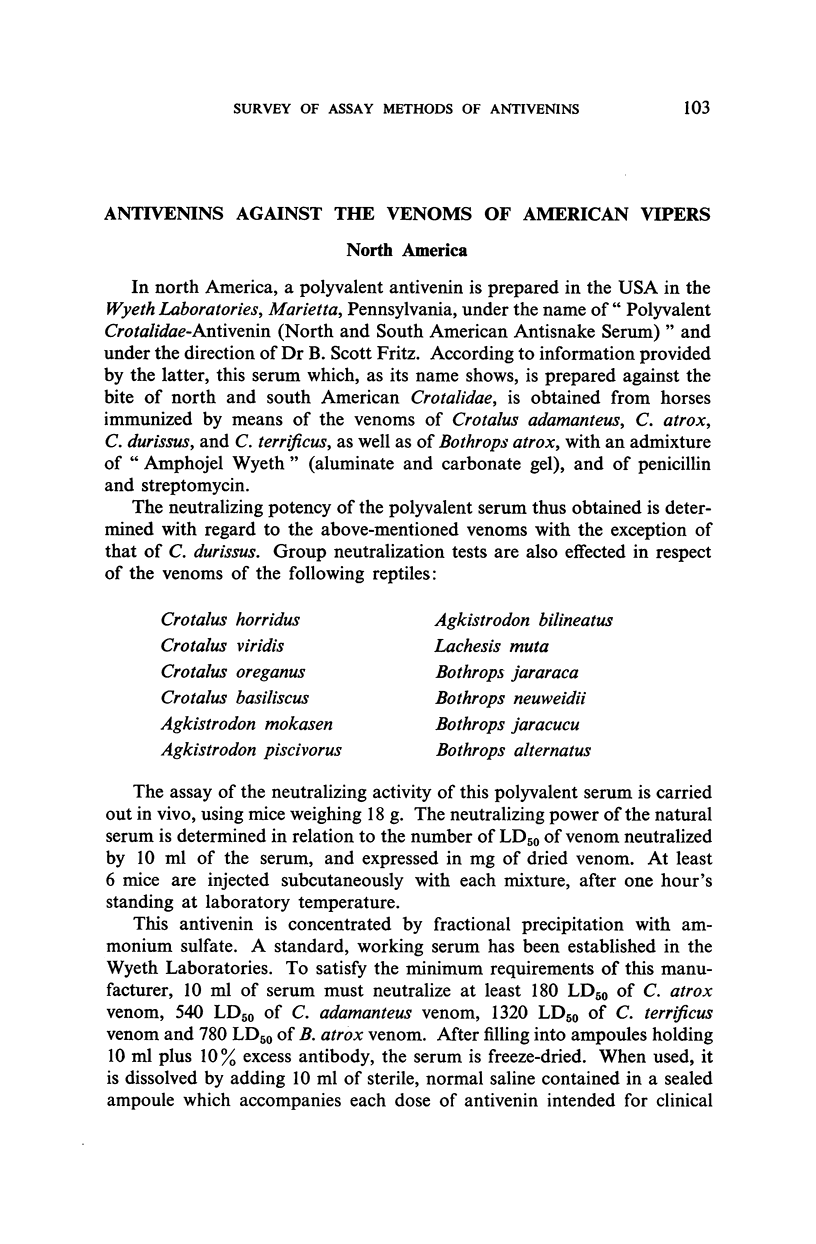
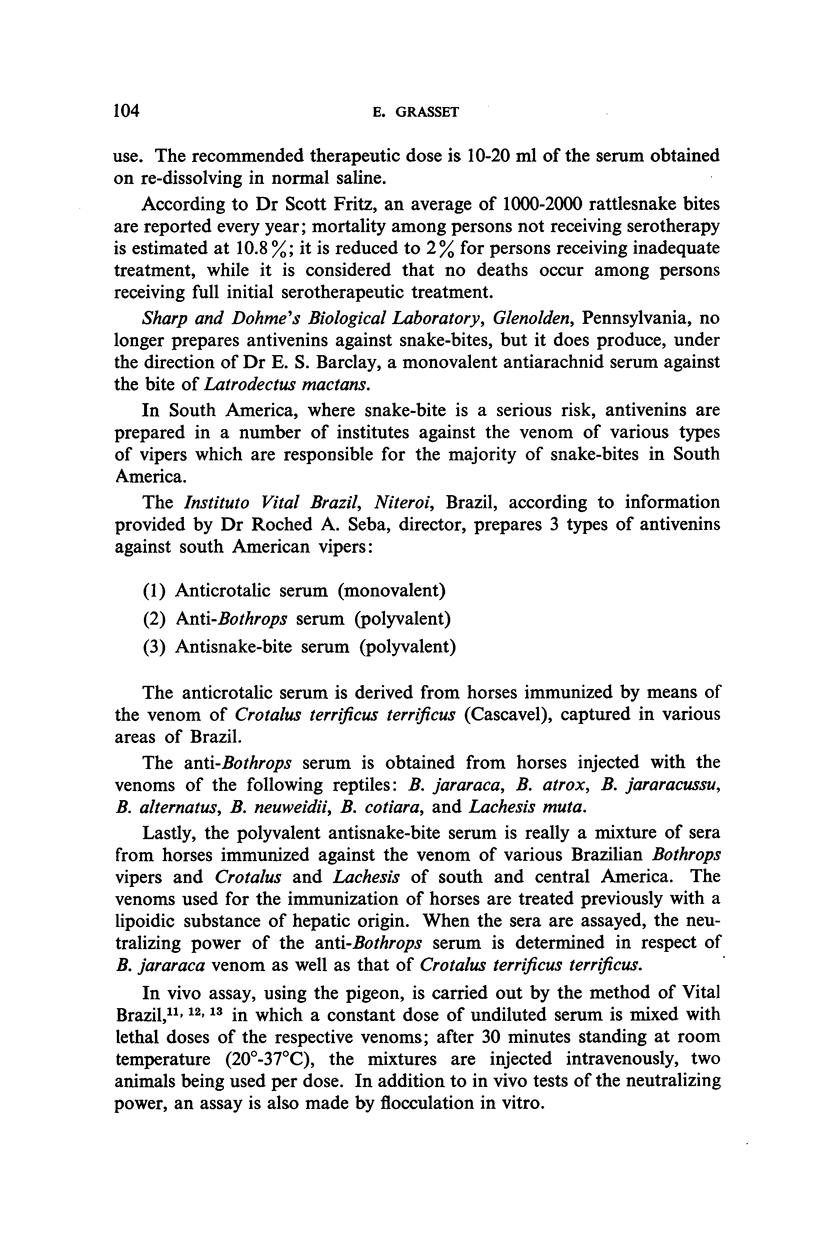
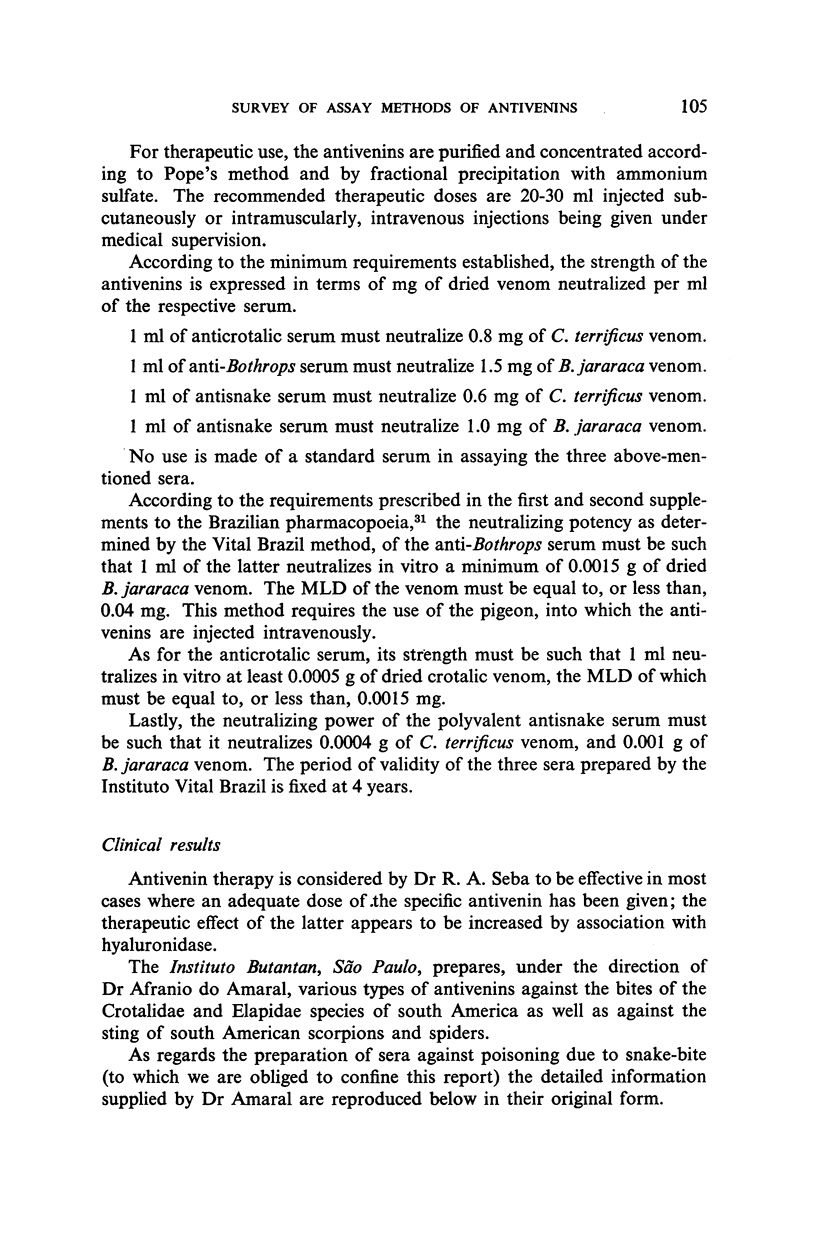
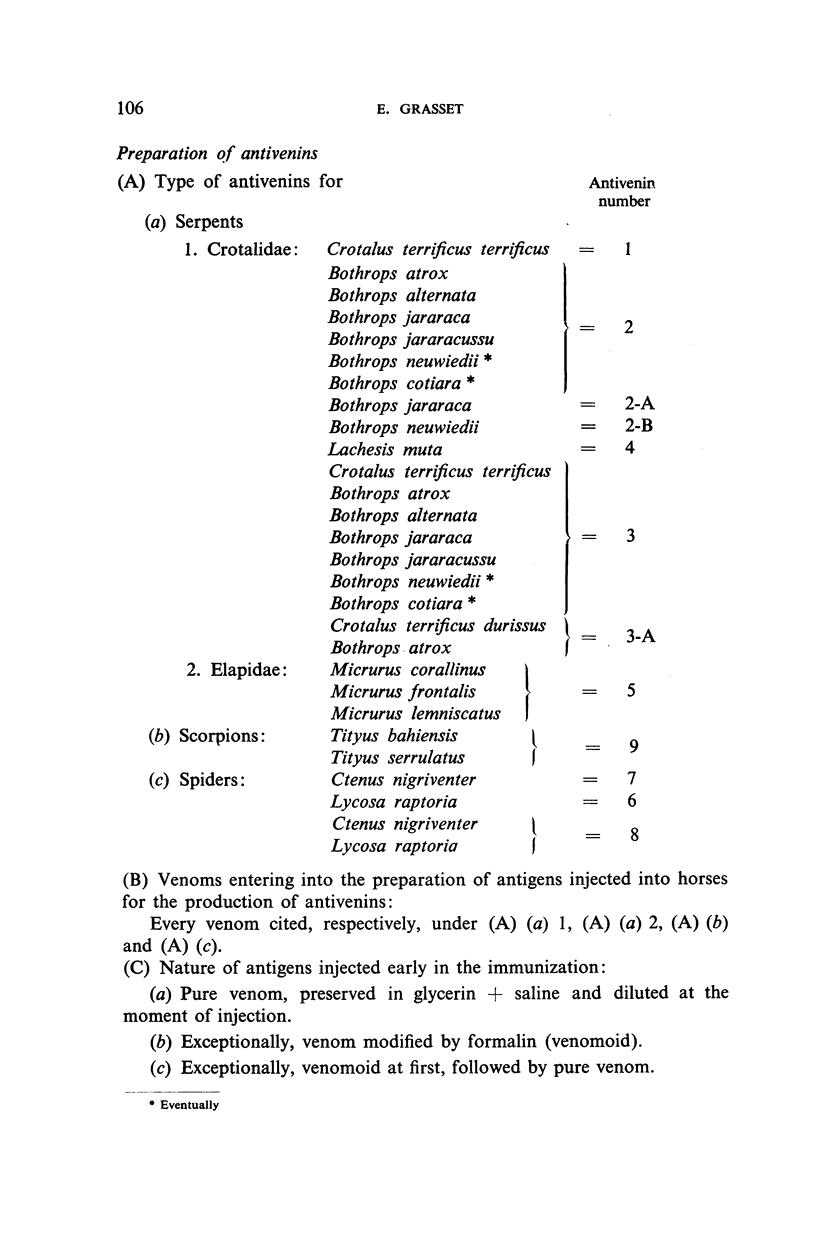
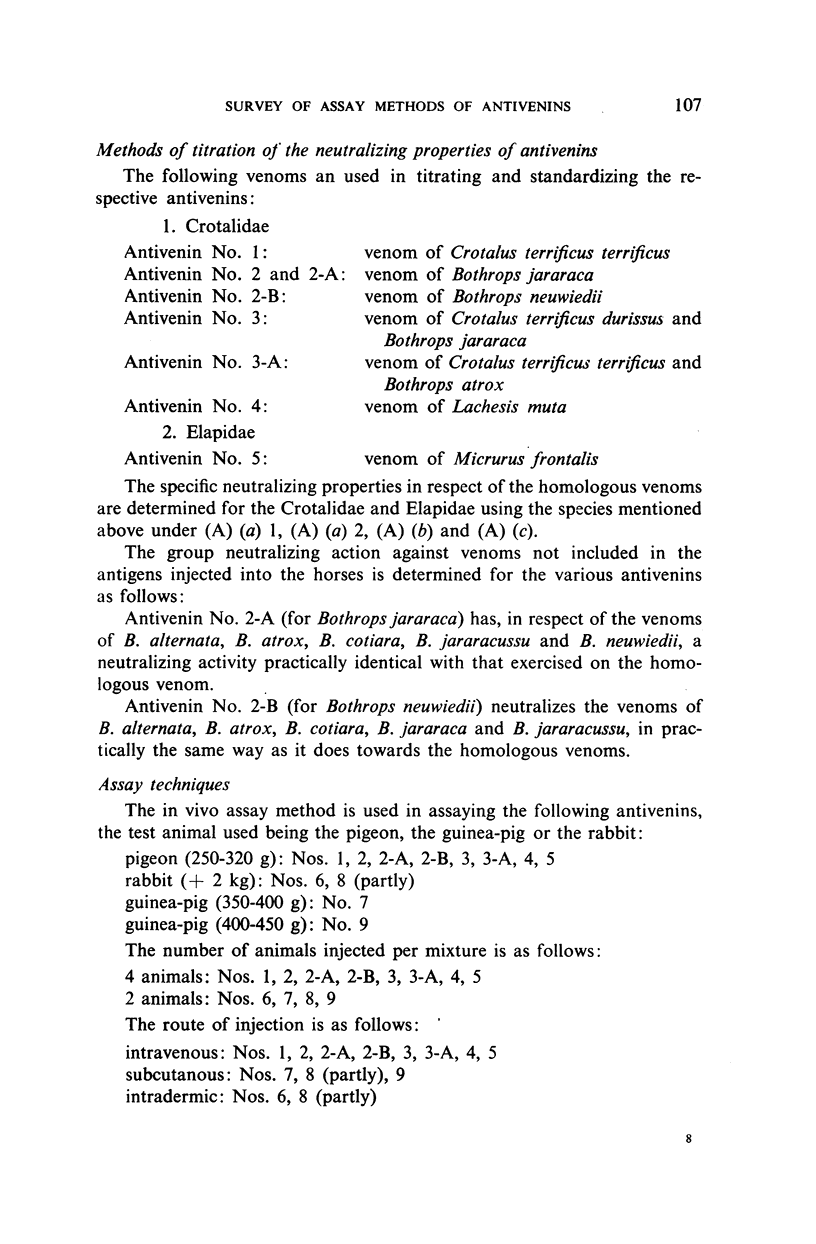
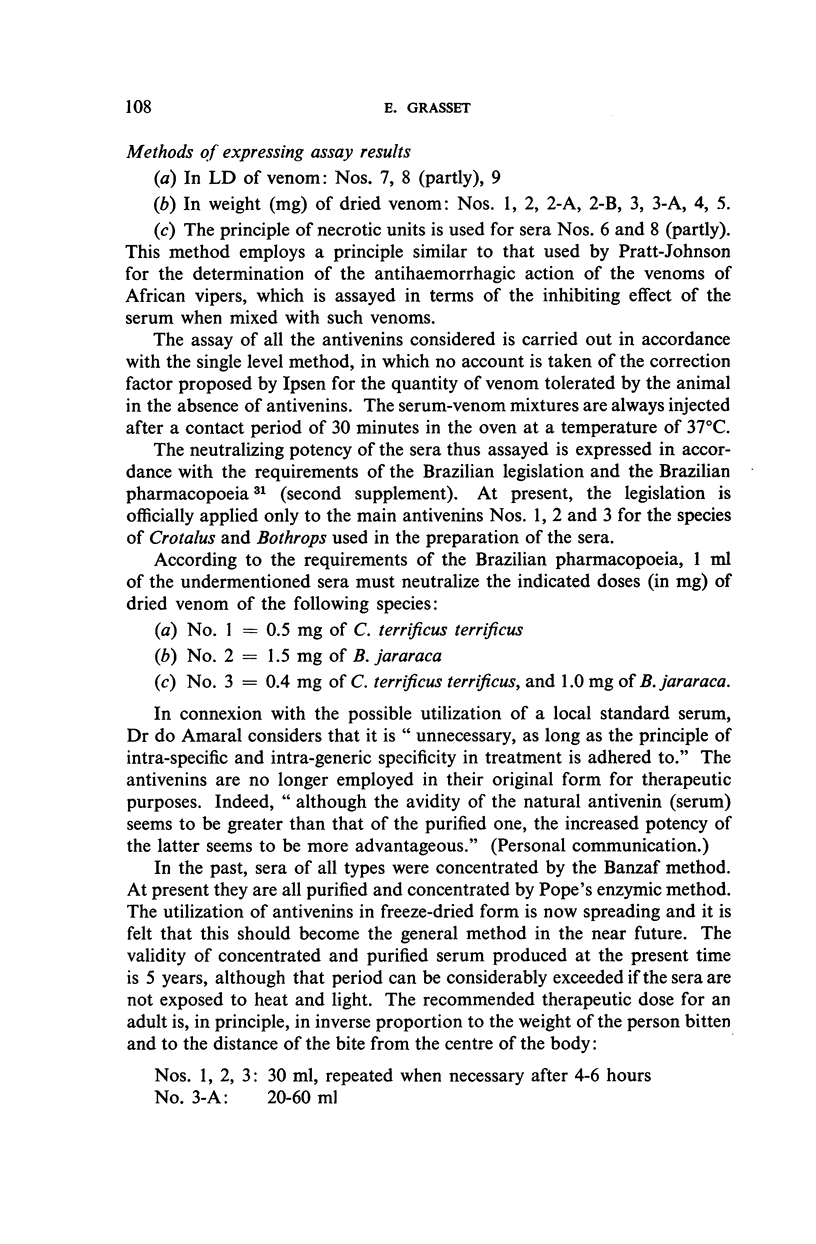
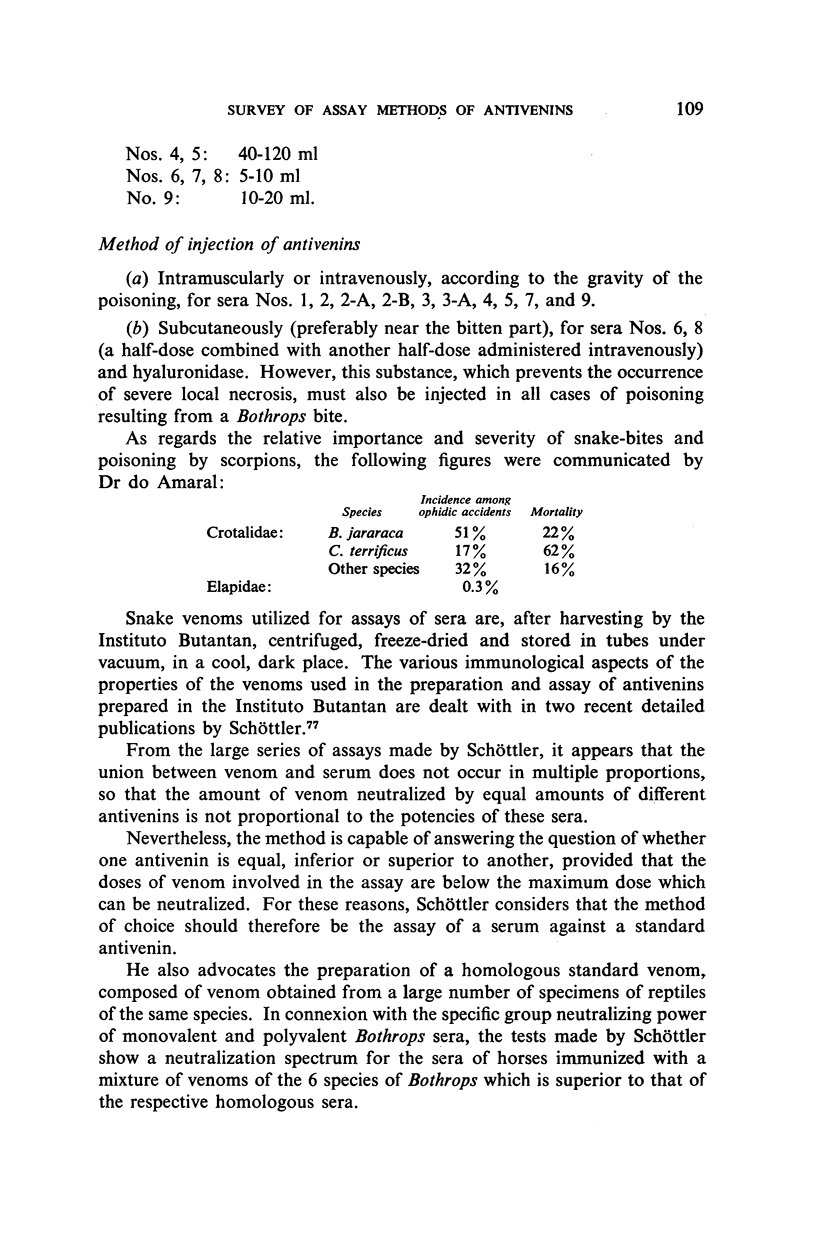
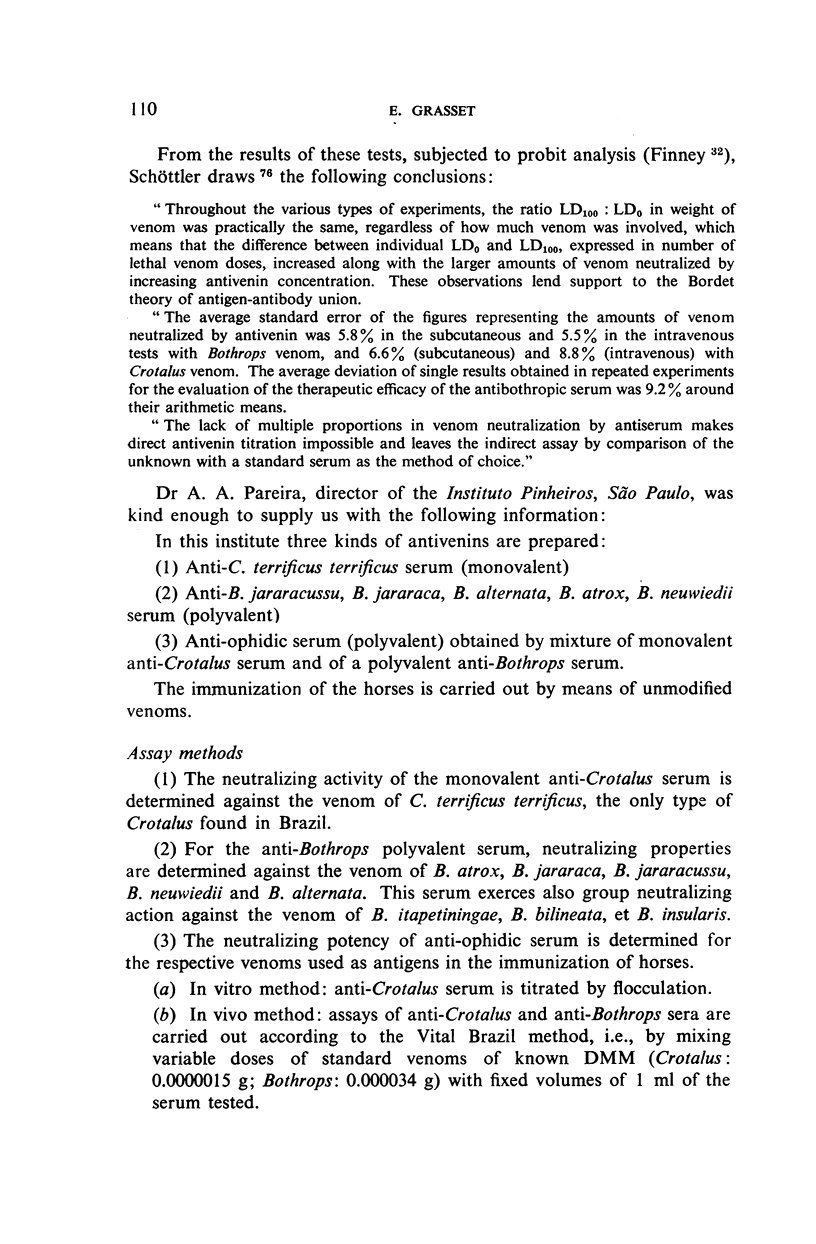
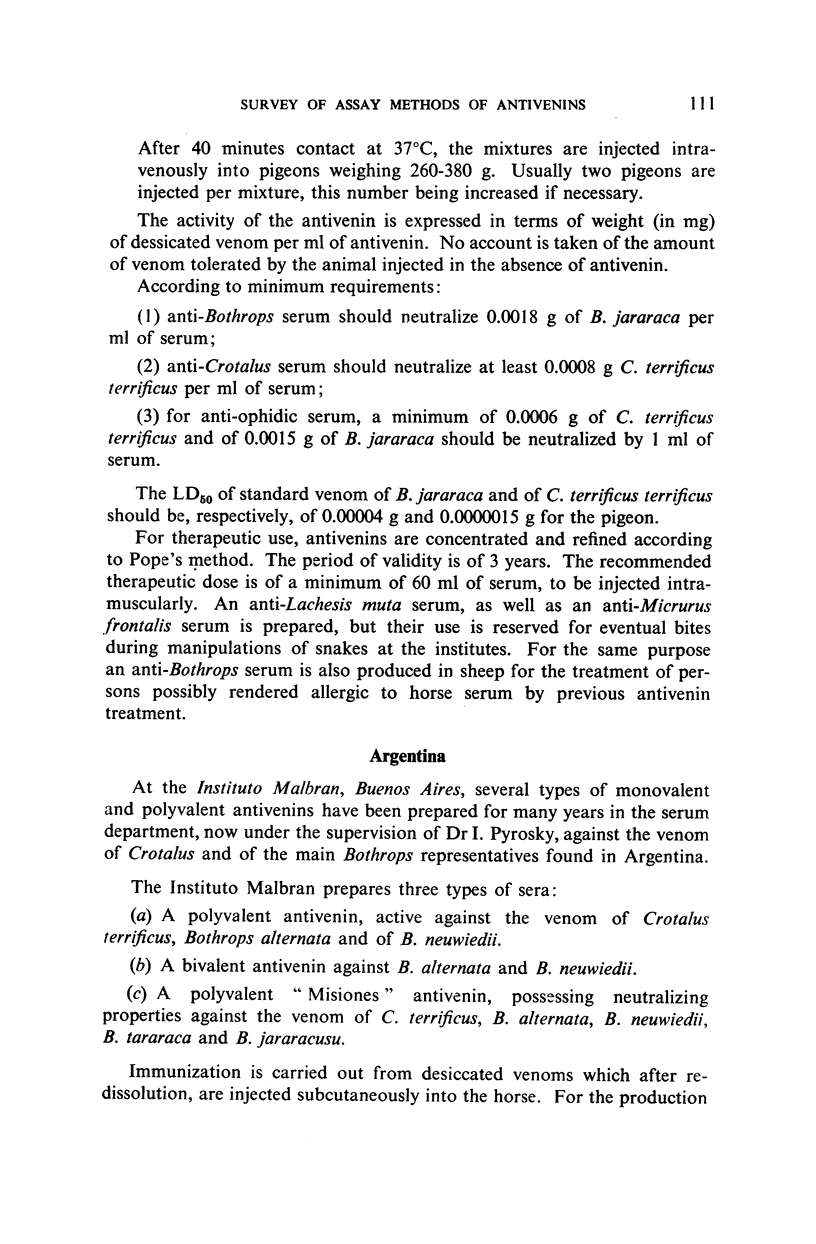
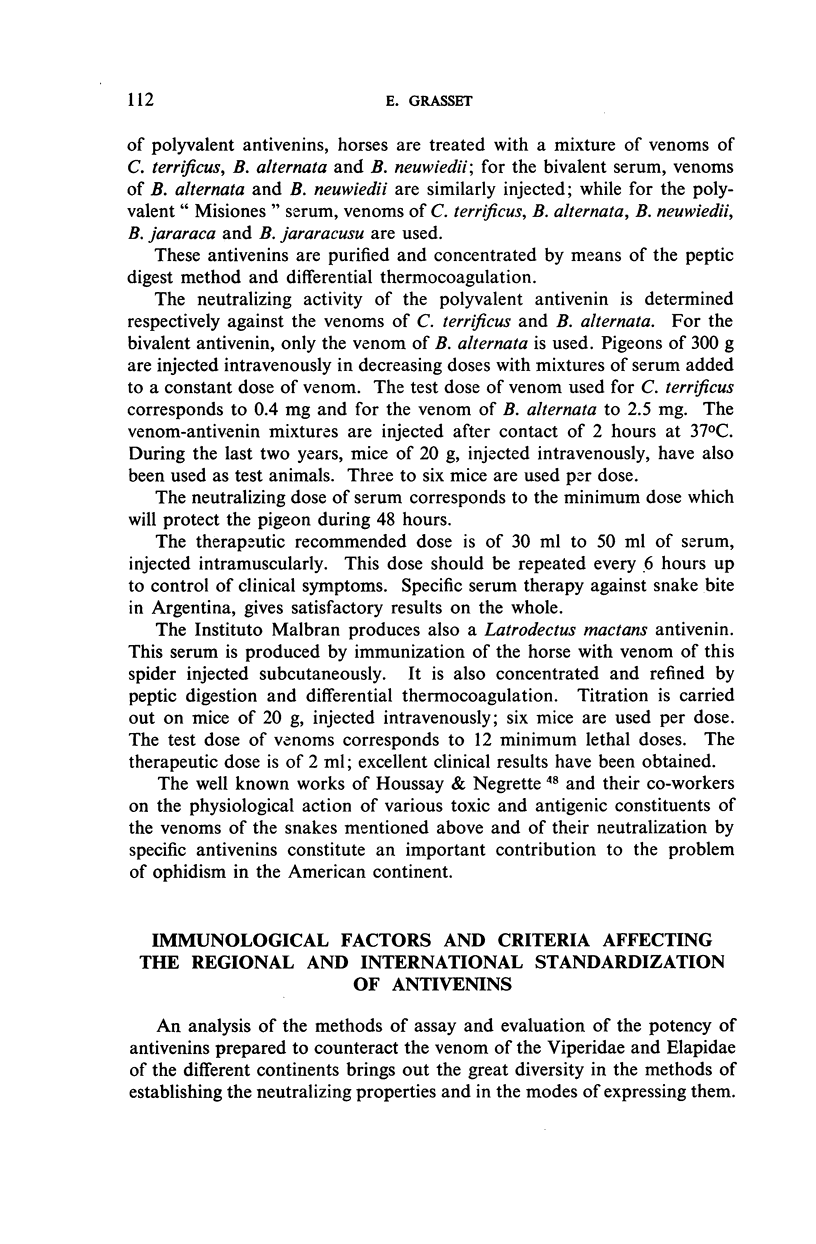
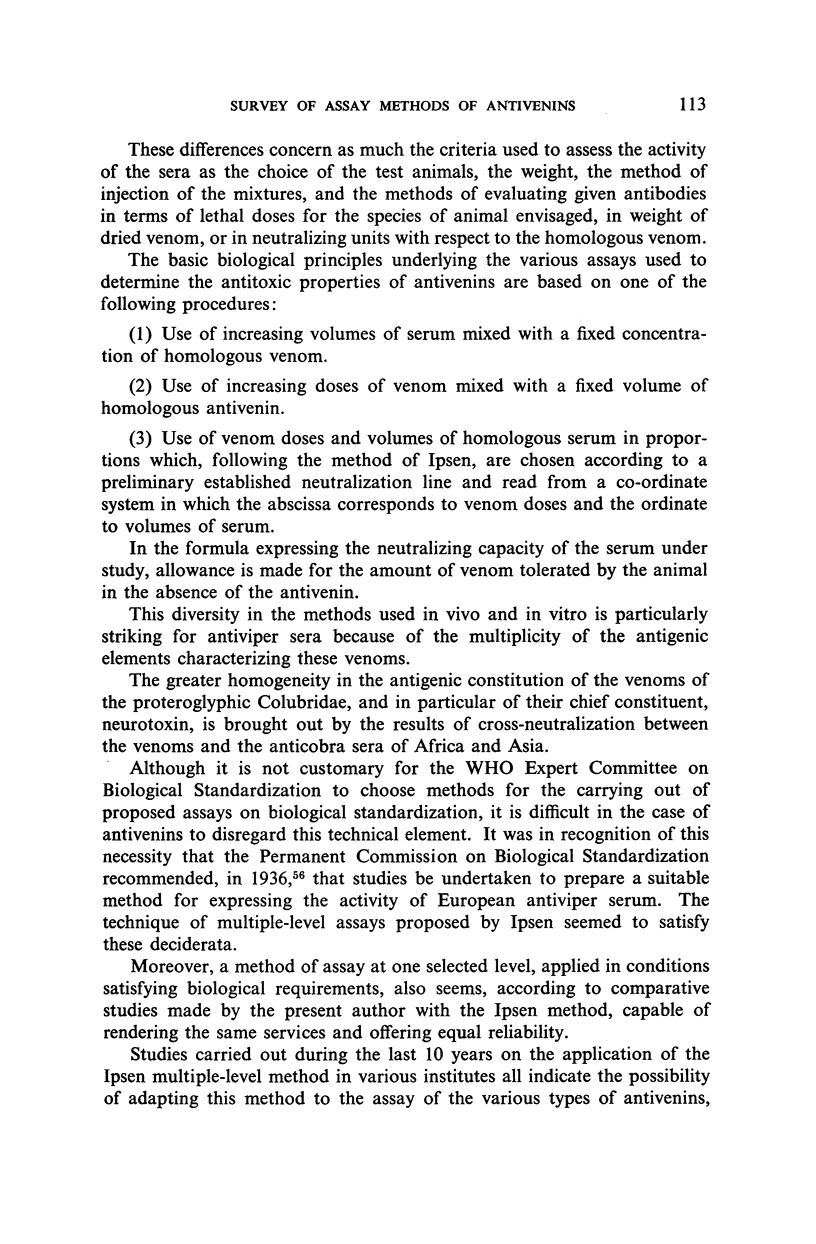
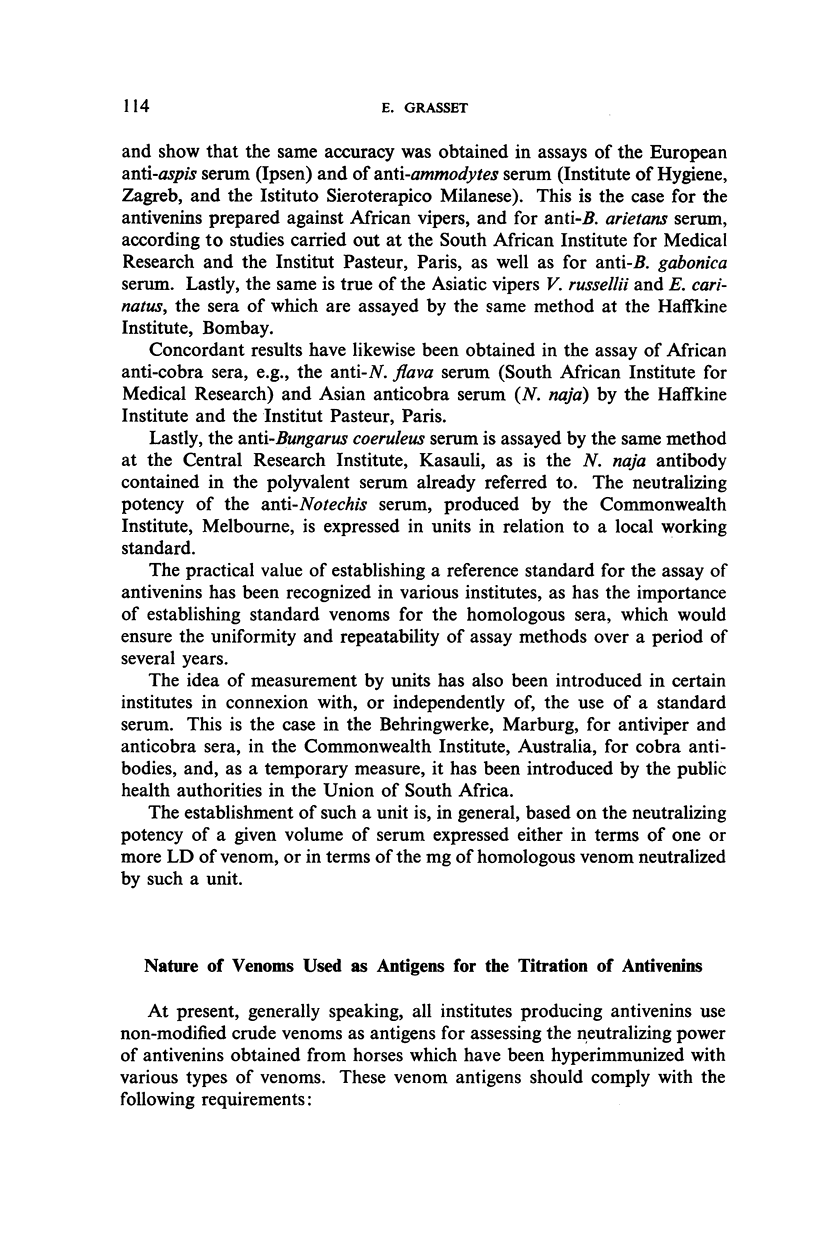
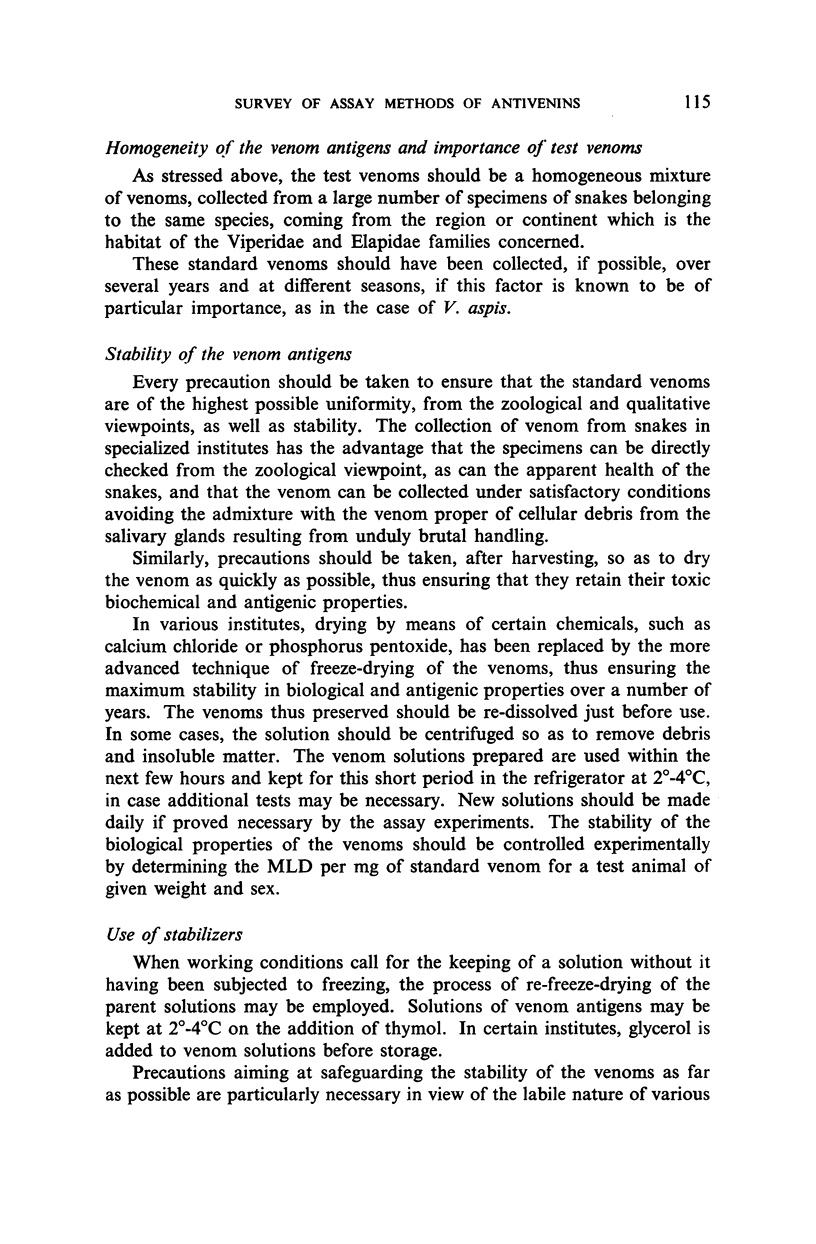
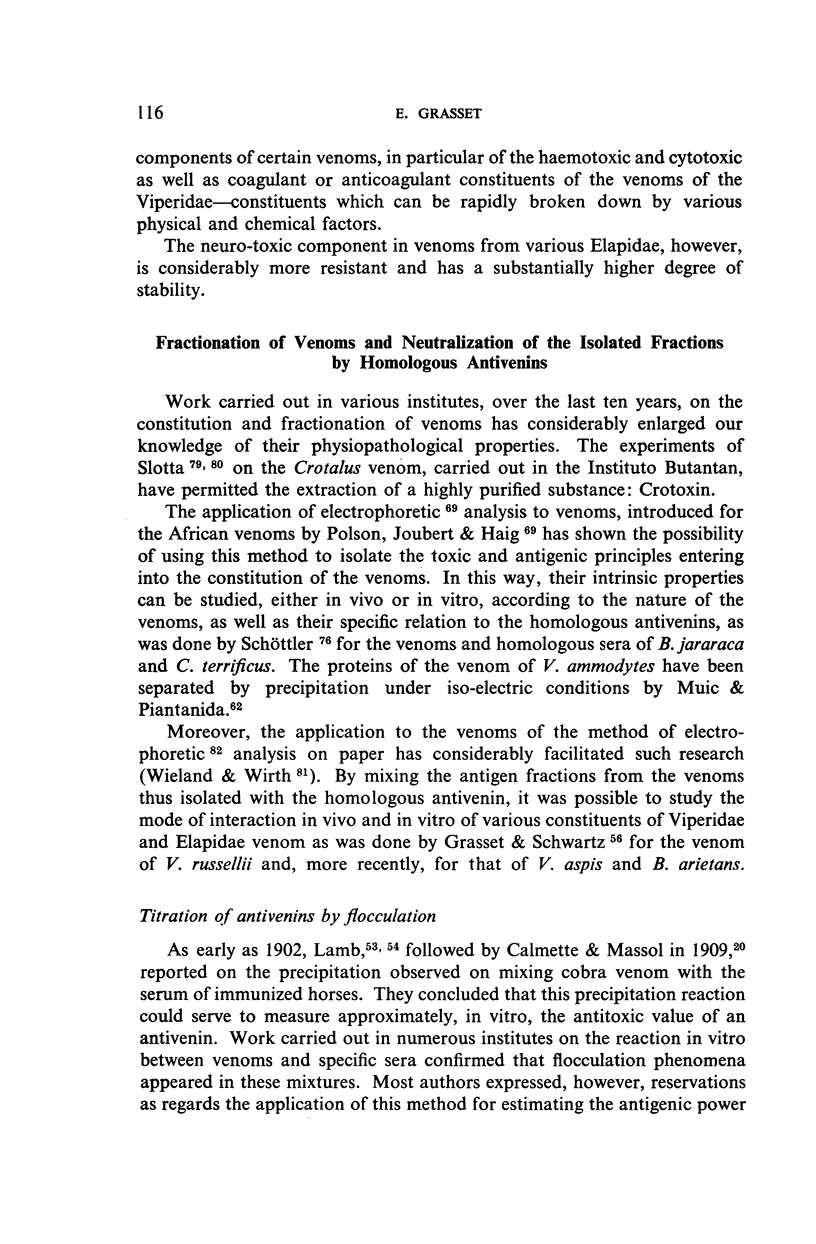
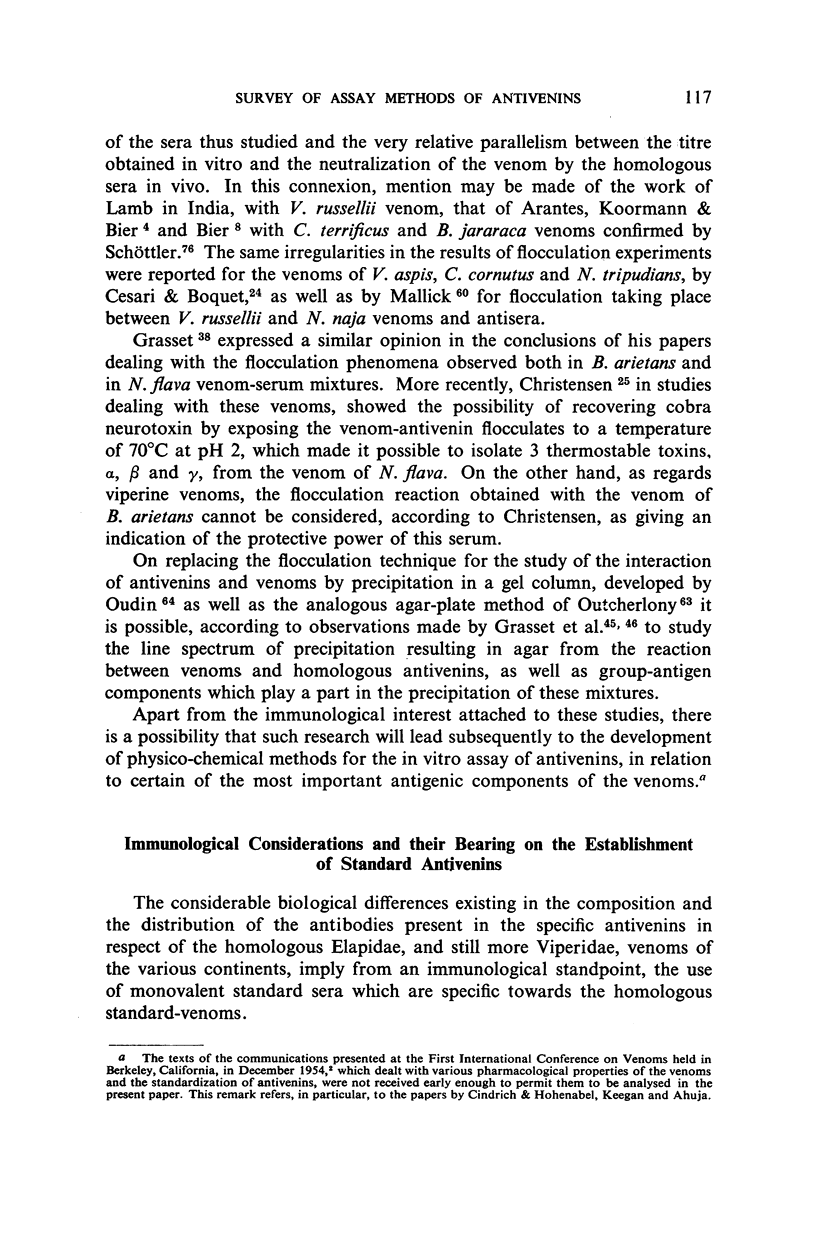
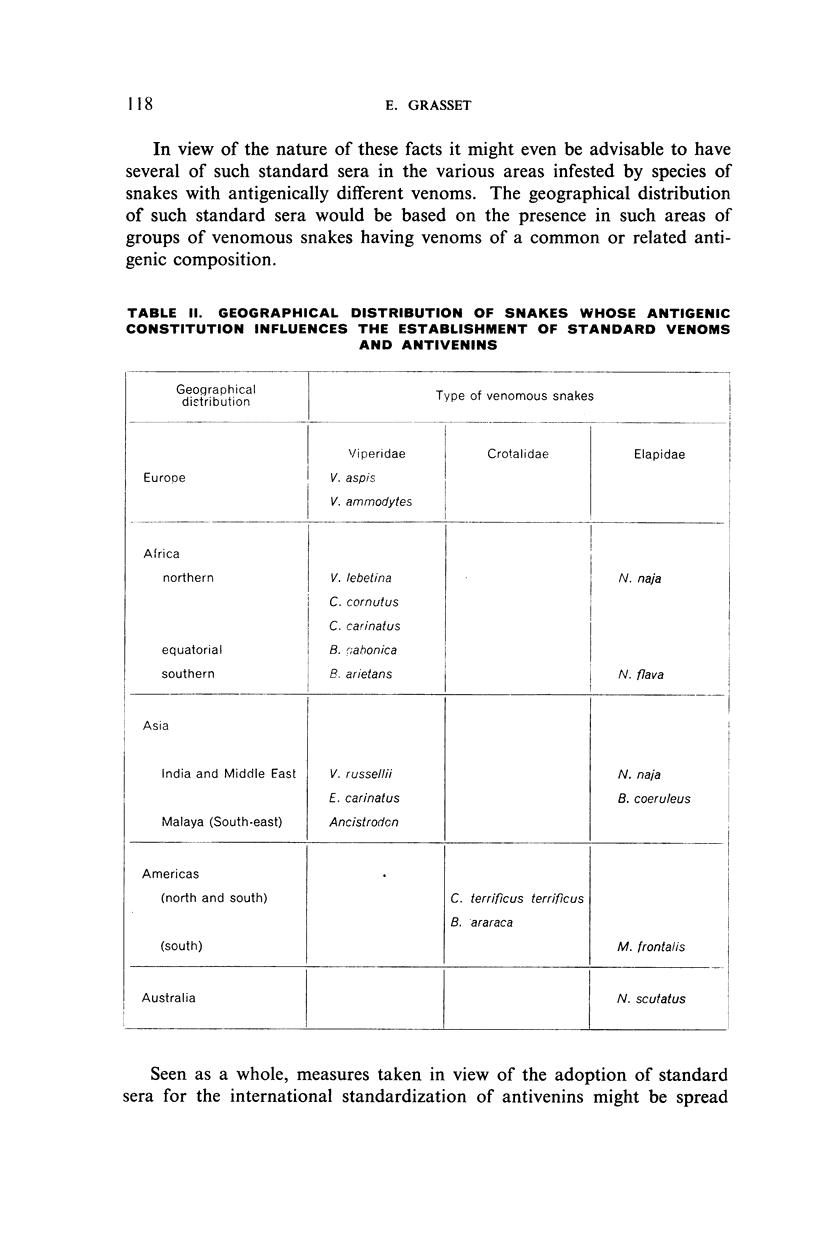
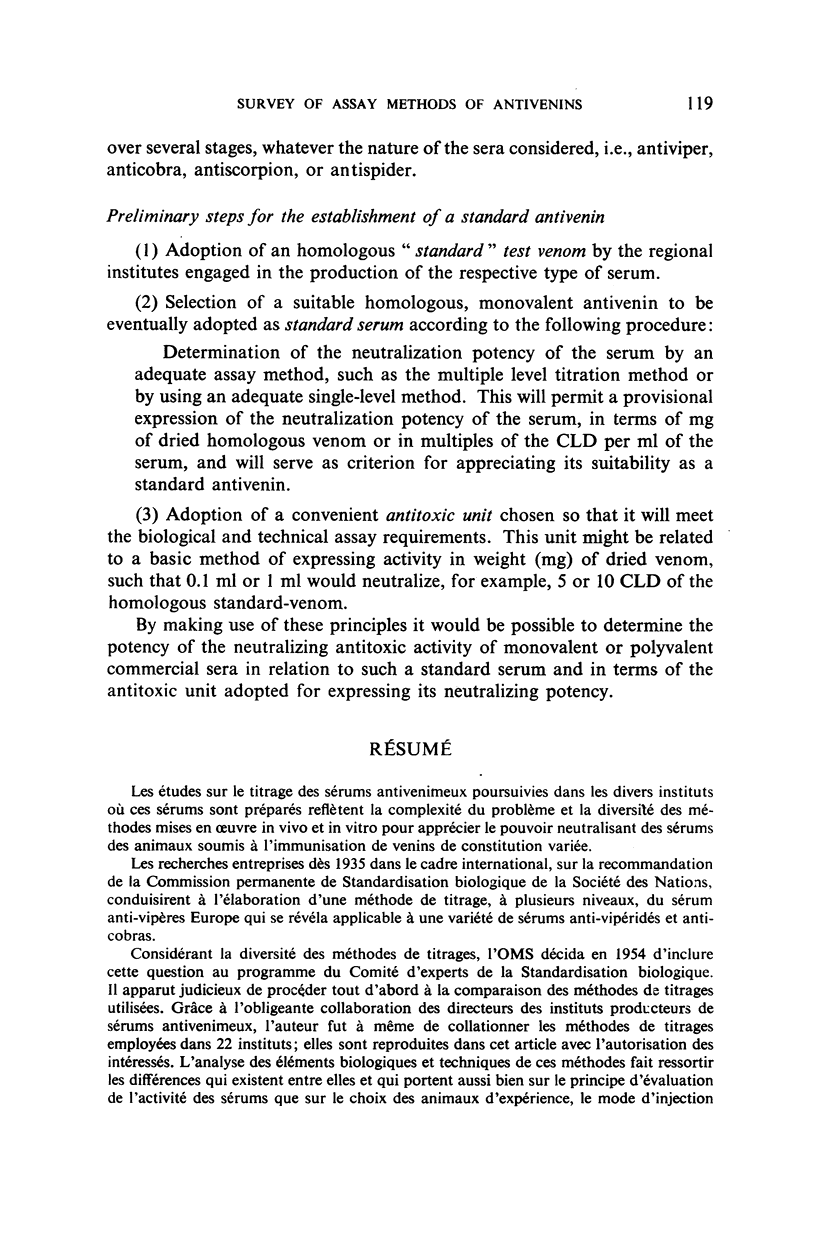
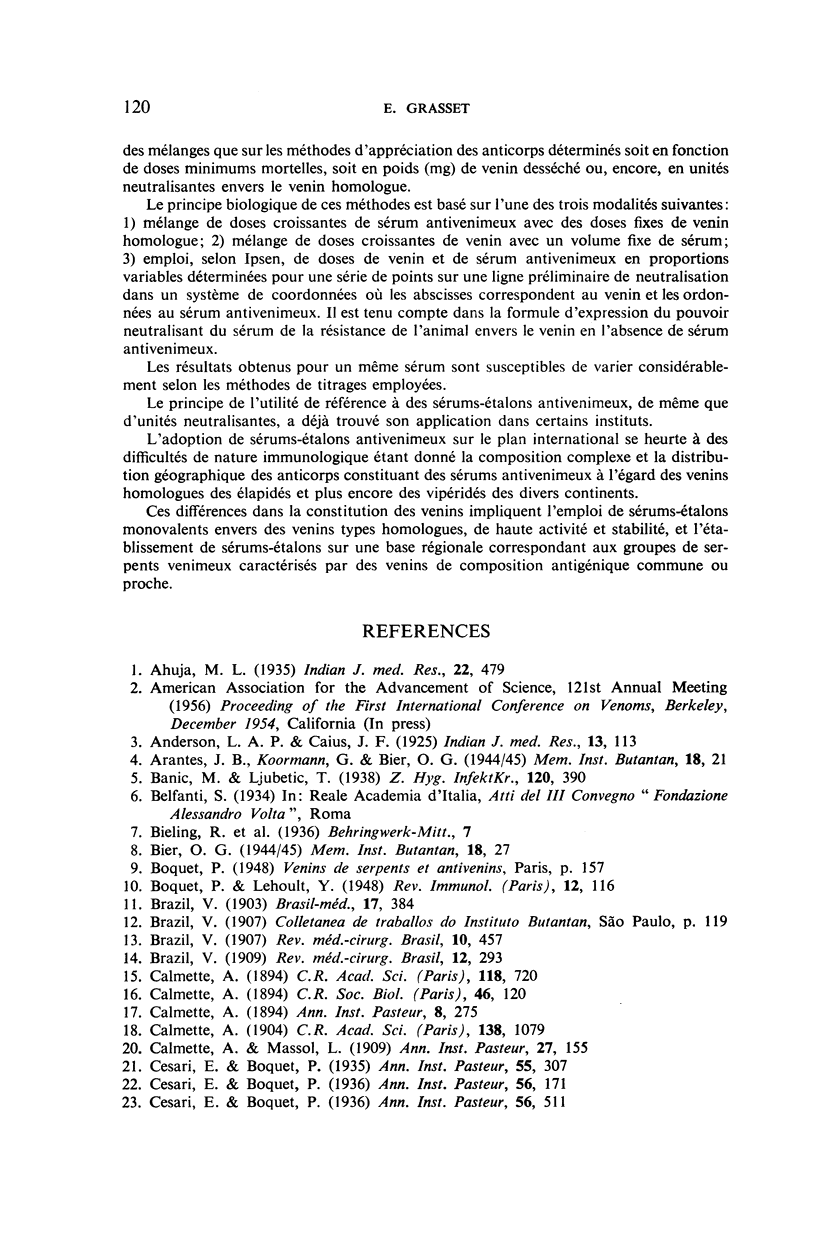
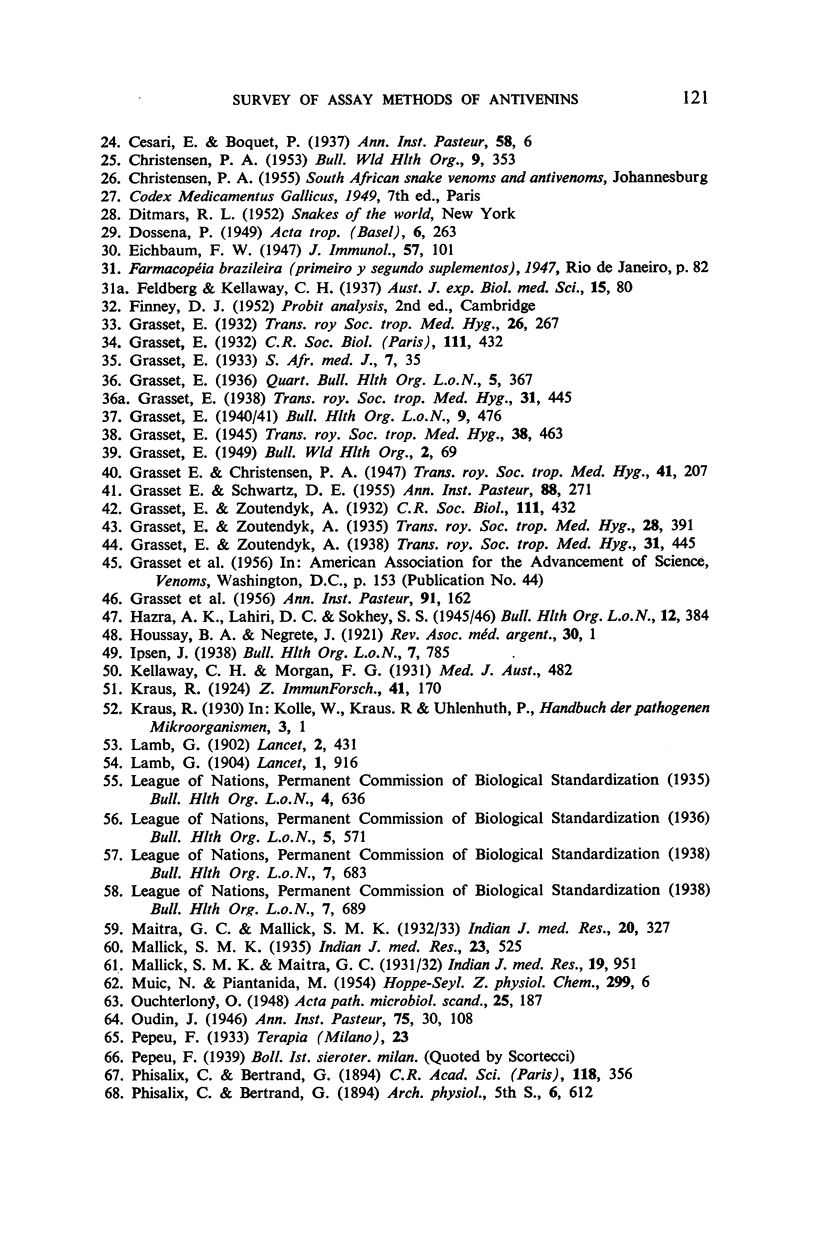
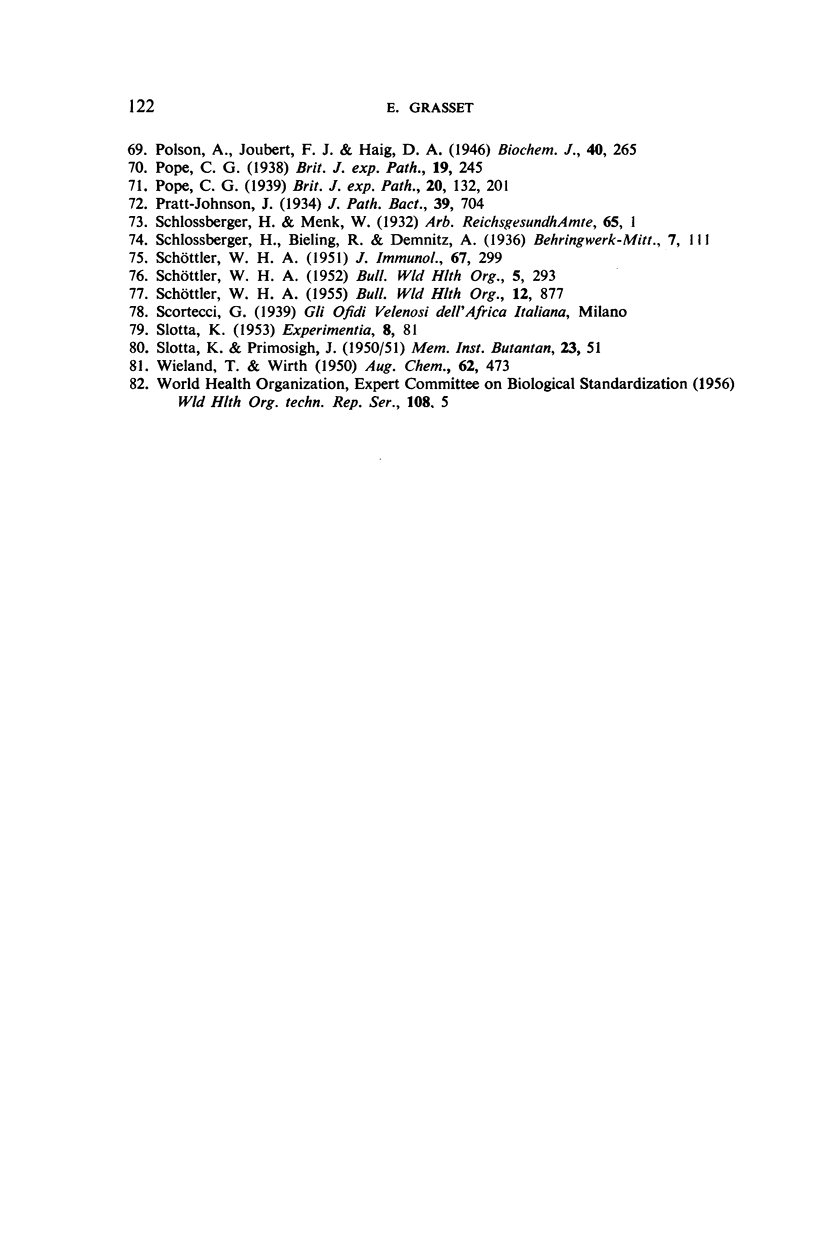
Selected References
These references are in PubMed. This may not be the complete list of references from this article.
- BRECHBUHLER T., GRASSET E., PONGRATZ E. Analyse immunochimique des constituants des venins de serpents par la méthode de précipitation en milieu gélifié. Ann Inst Pasteur (Paris) 1956 Aug;91(2):162–186. [PubMed] [Google Scholar]
- DOSSENA P. Recherches sur l'influence des hormones sexuelles dans l'intoxication expérimentale par le venin de naja flava (Cape cobra). Acta Trop. 1949;6(3):263–267. [PubMed] [Google Scholar]
- GRASSET E., SCHWARTZ D. E. Fractionnement par électrophorèse sur papier du venin de Vipera russellii; propriêtés et dosages des facteurs coagulant et anticoagulant de ce venin. Ann Inst Pasteur (Paris) 1955 Mar;88(3):271–281. [PubMed] [Google Scholar]
- Polson A., Joubert F. J., Haig D. A. An electrophoretic examination of cobra venoms. Biochem J. 1946;40(2):265–269. doi: 10.1042/bj0400265. [DOI] [PMC free article] [PubMed] [Google Scholar]
- SCHOTTLER W. H. A. On the stability of desiccated snake venoms. J Immunol. 1951 Oct;67(4):299–304. [PubMed] [Google Scholar]
- SCHOTTLER W. H. Problems of antivenin standardization. Bull World Health Organ. 1952;5(3):293–320. [PMC free article] [PubMed] [Google Scholar]
- SCHOTTLER W. H. Serological analysis of venoms and antivenins. Bull World Health Organ. 1955;12(6):877–903. [PMC free article] [PubMed] [Google Scholar]


